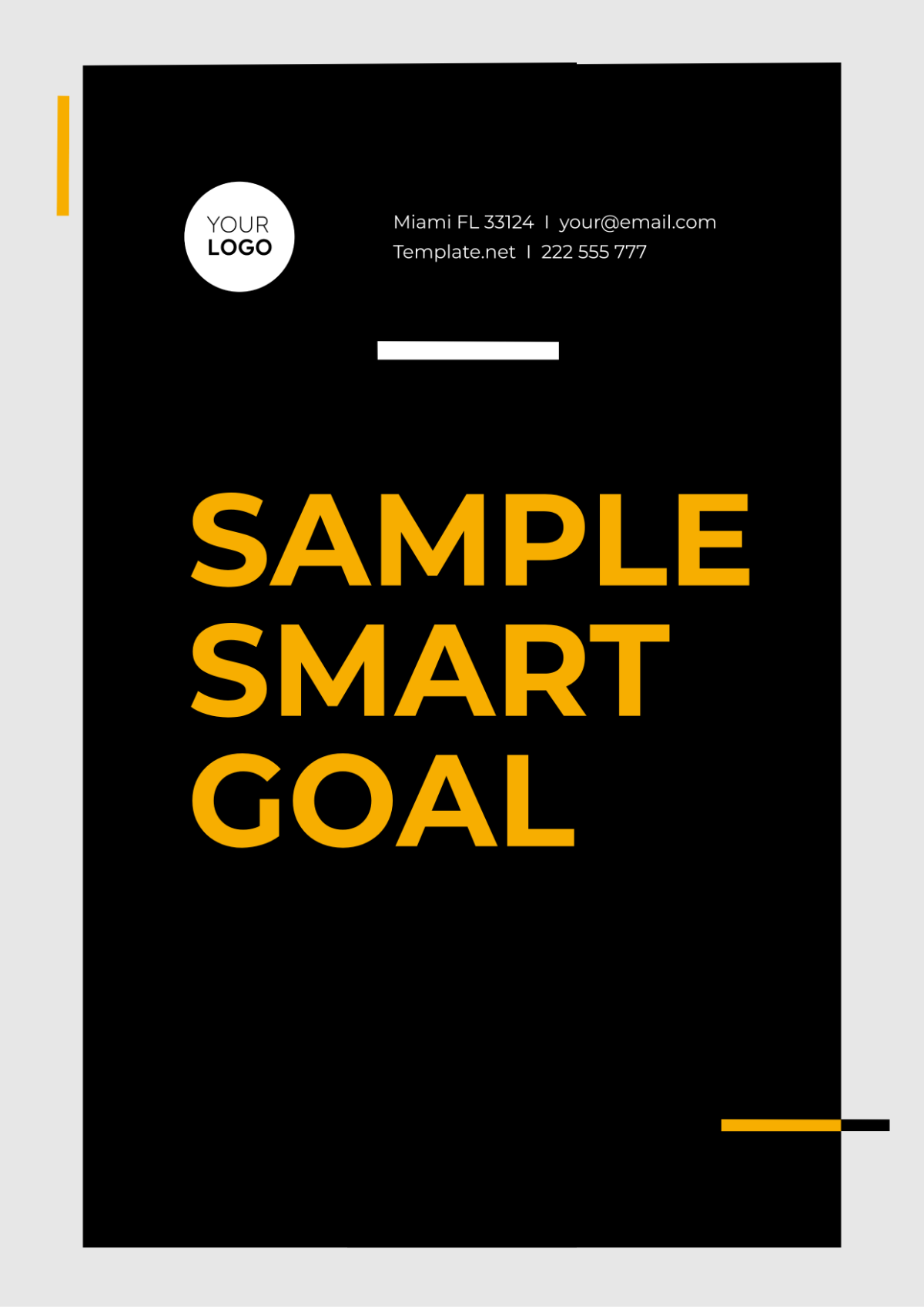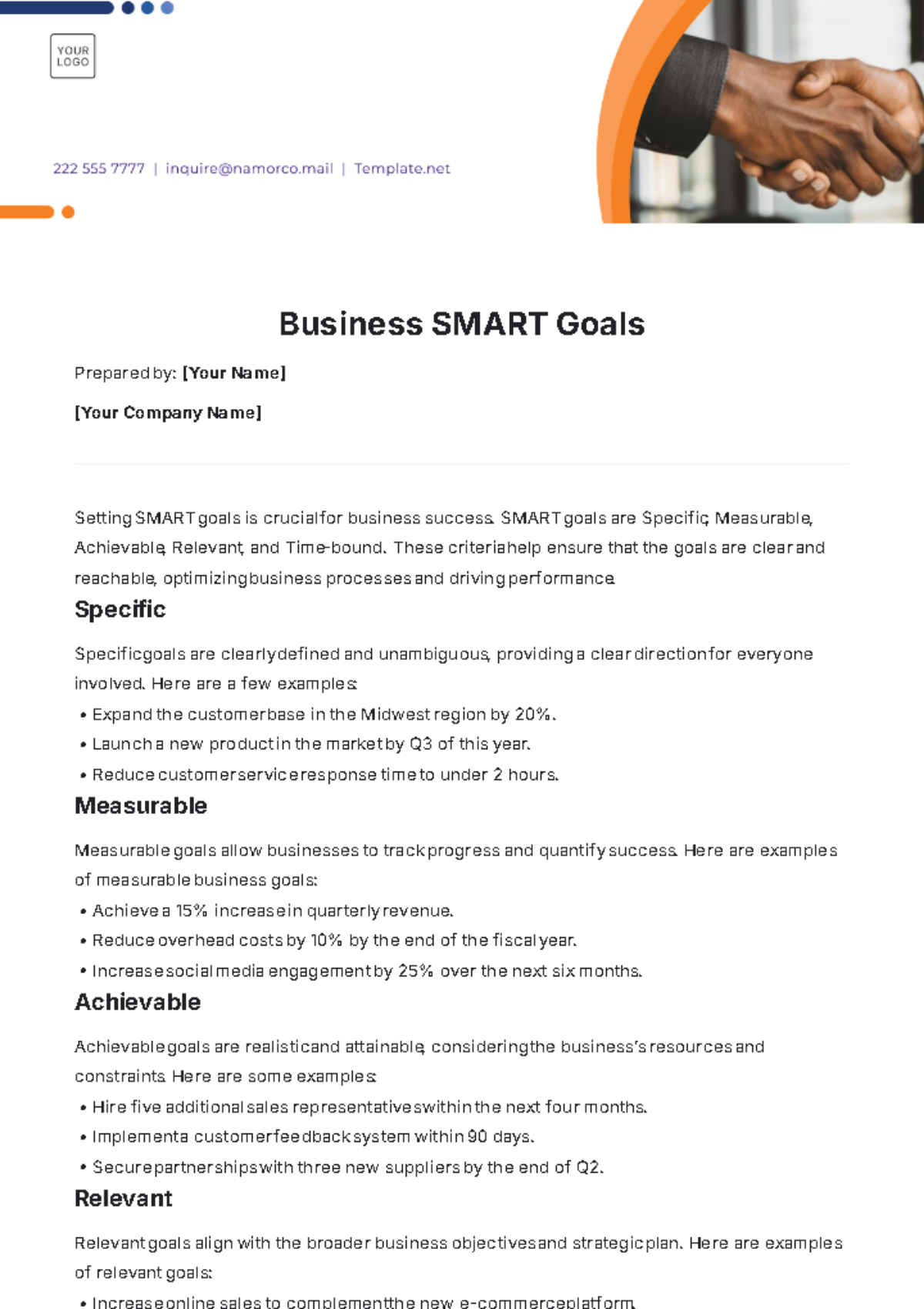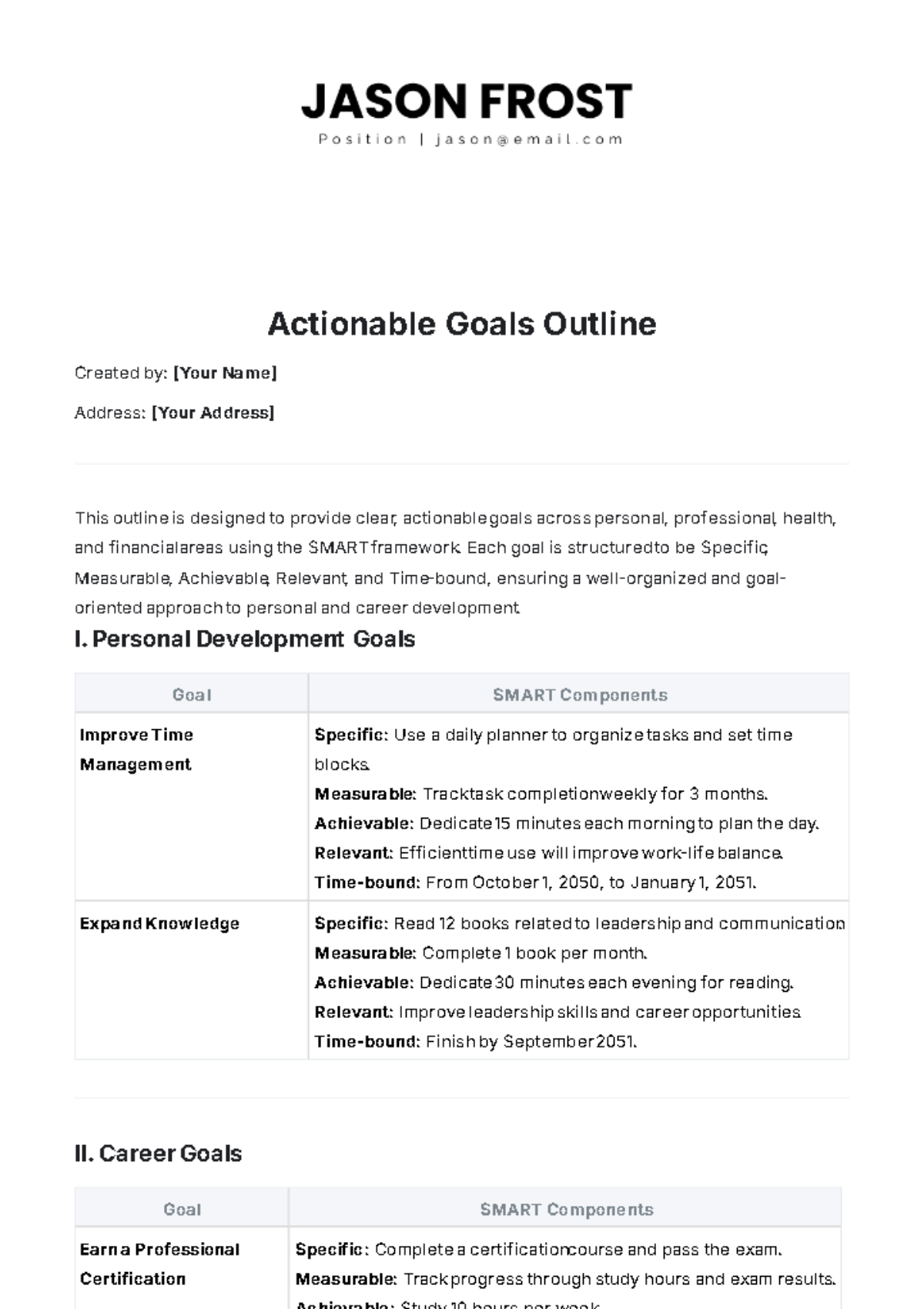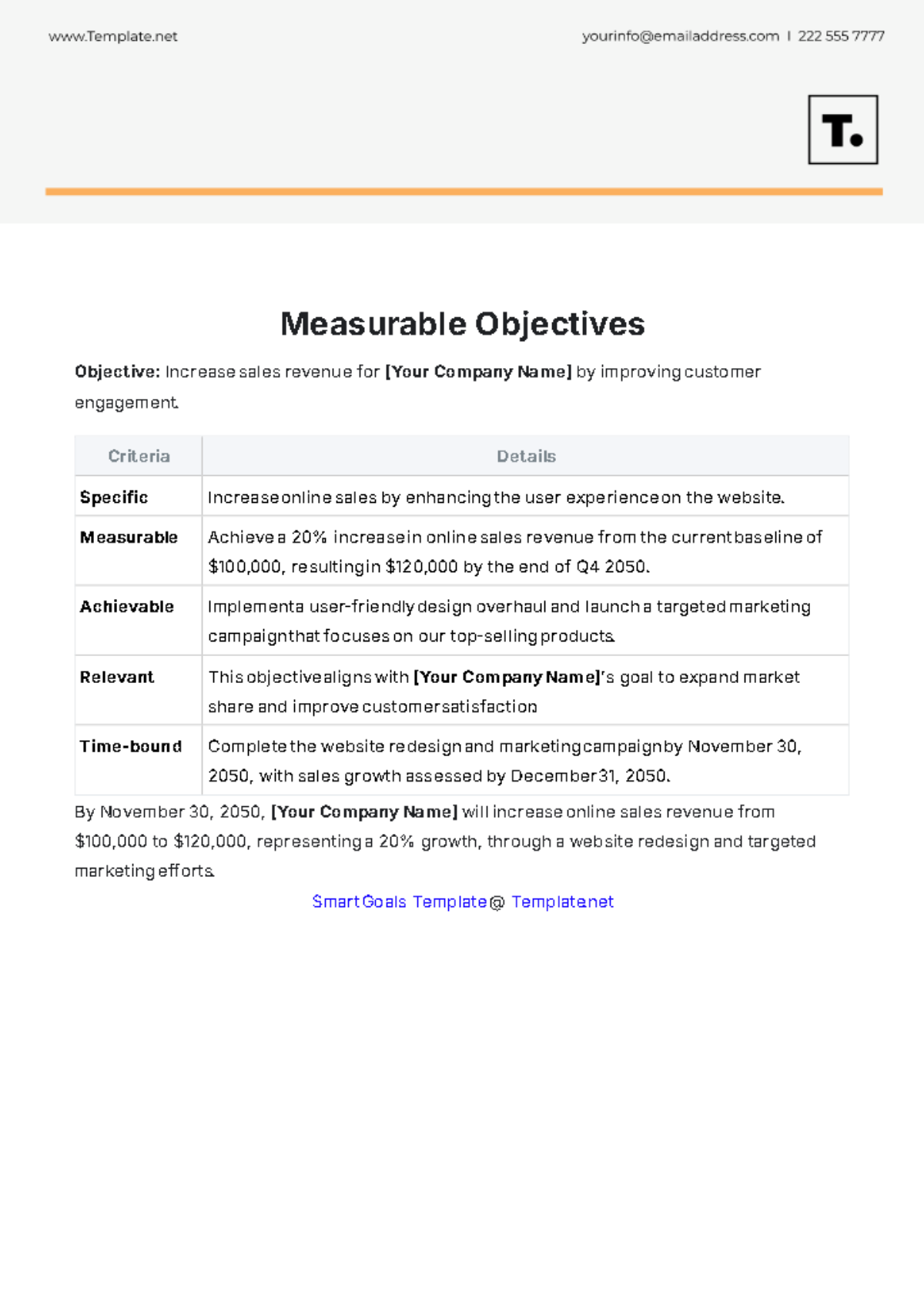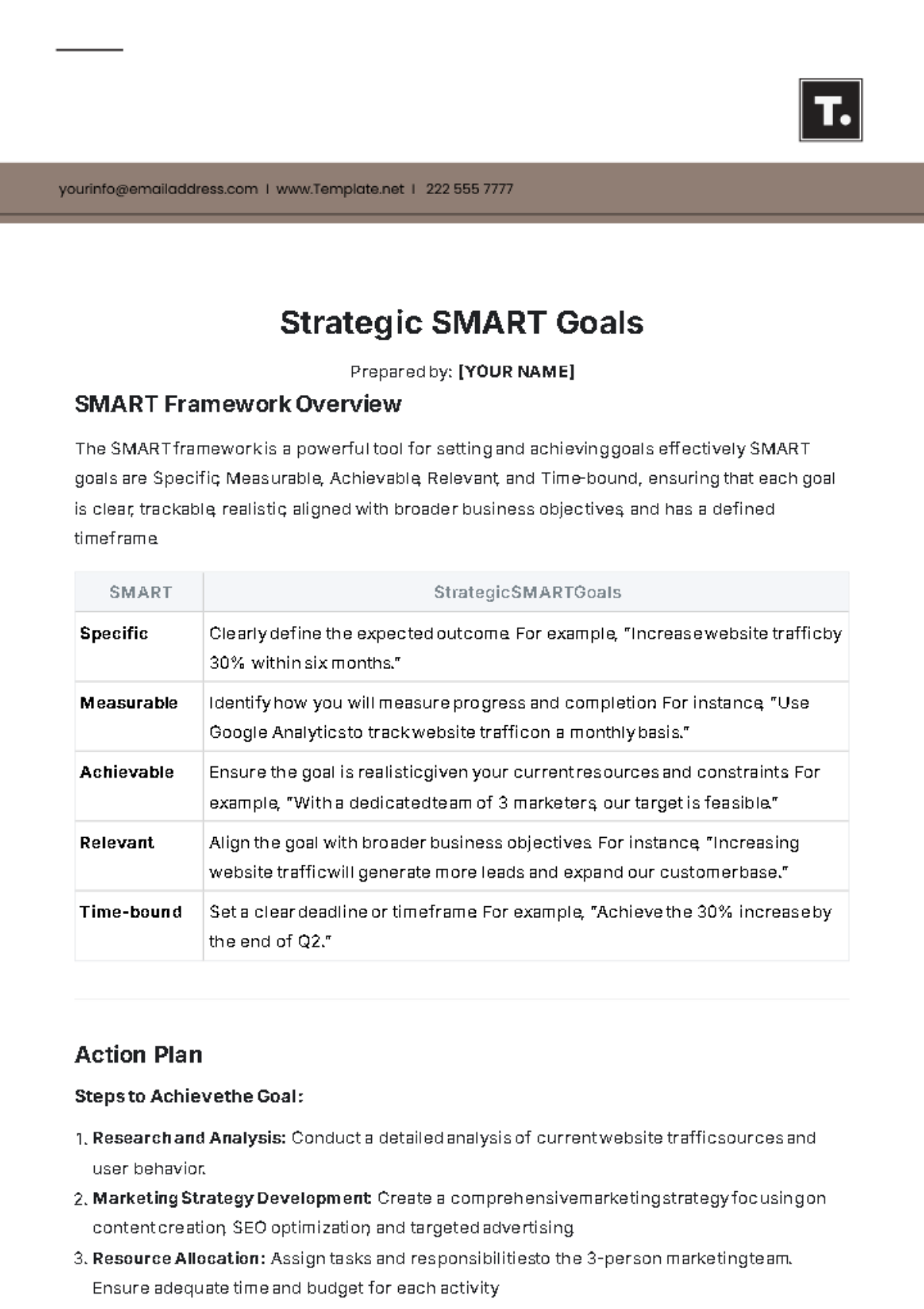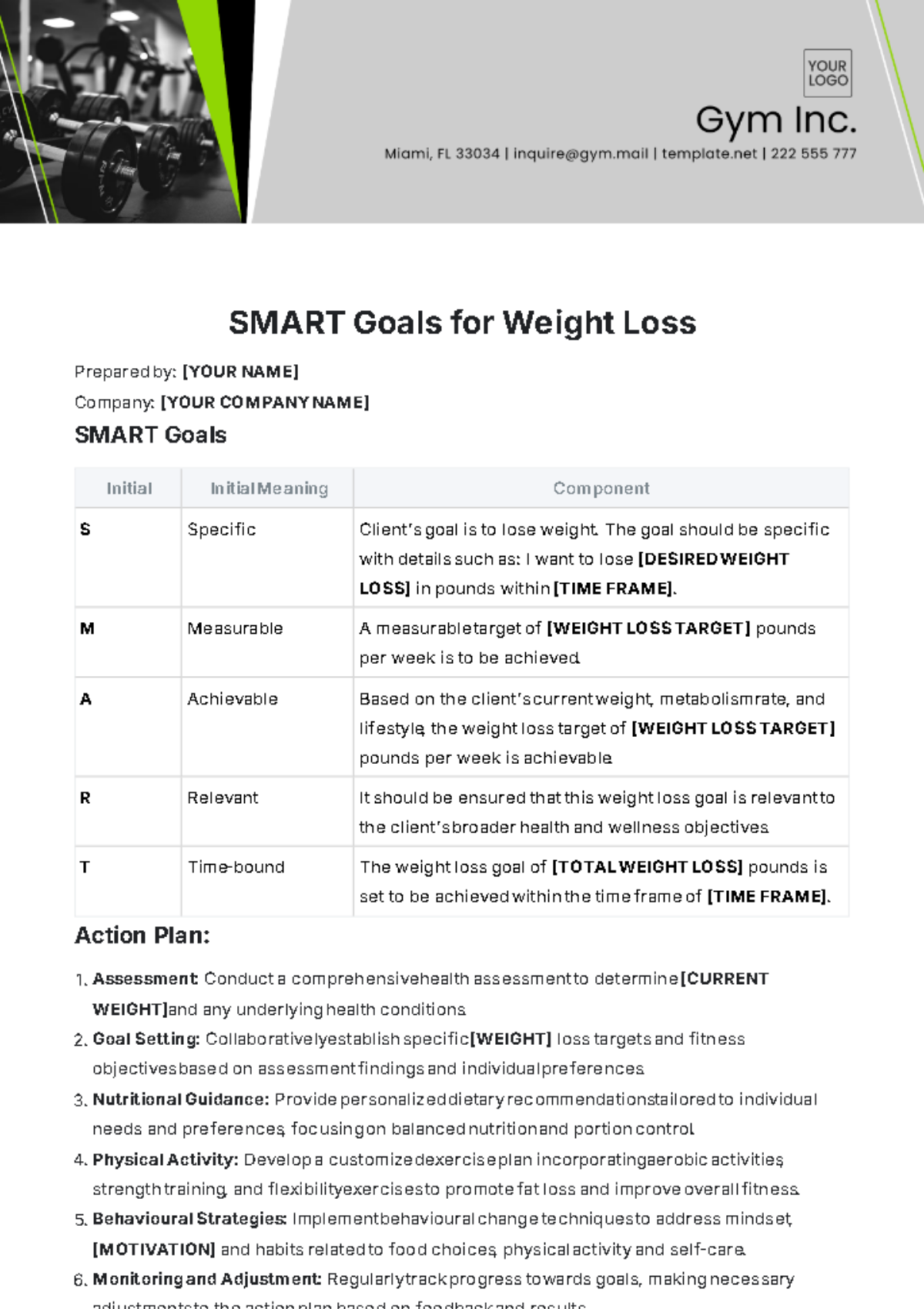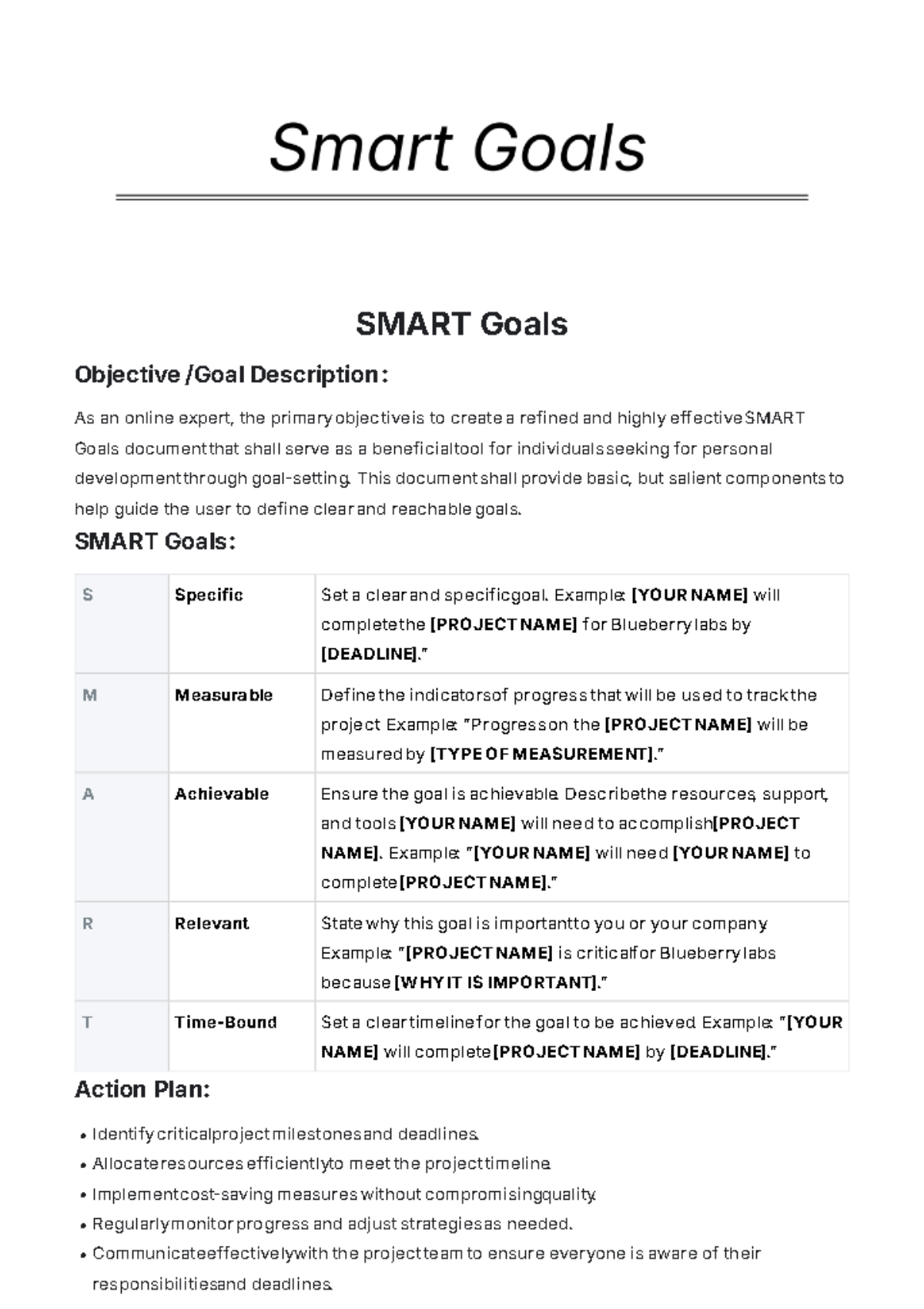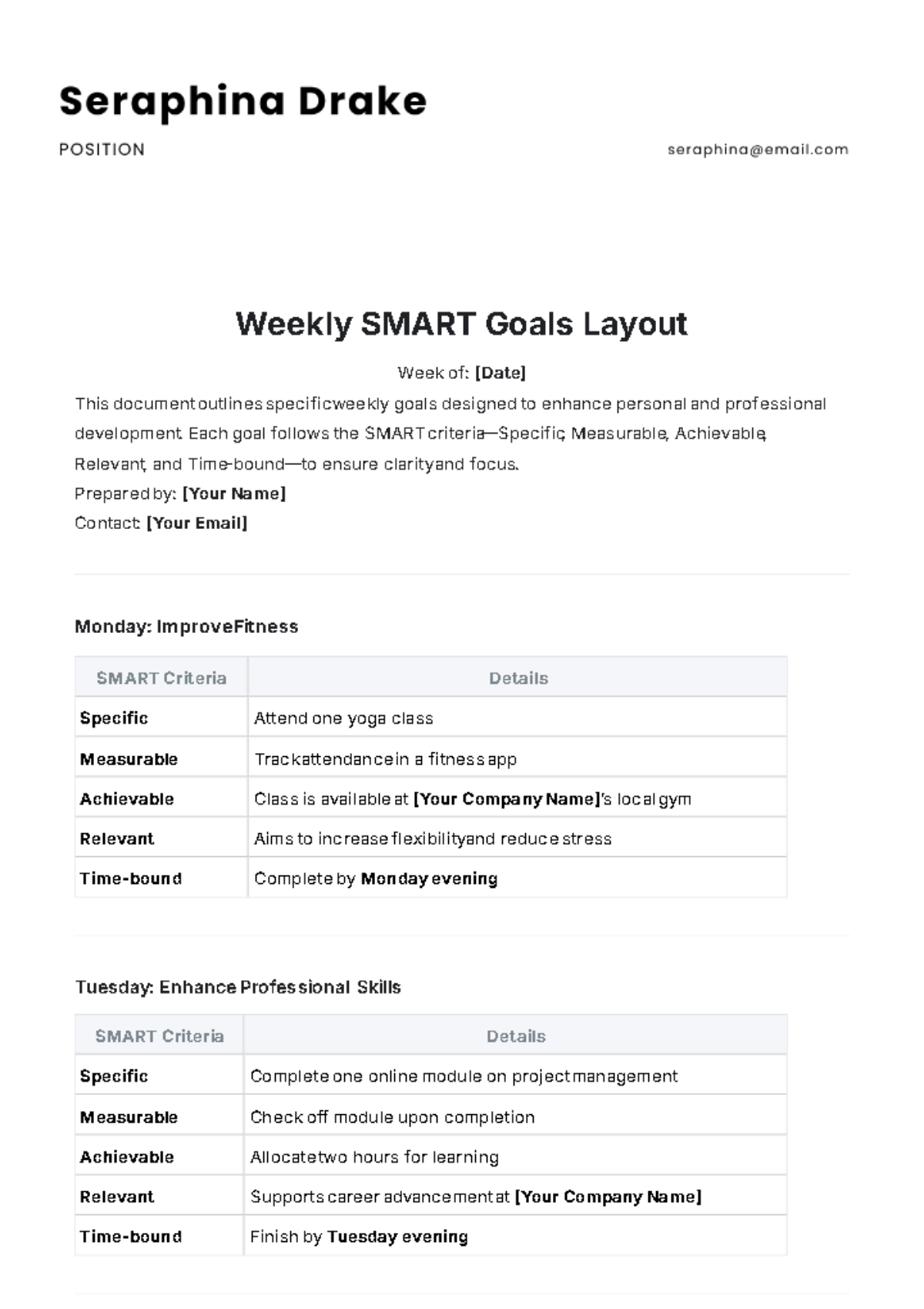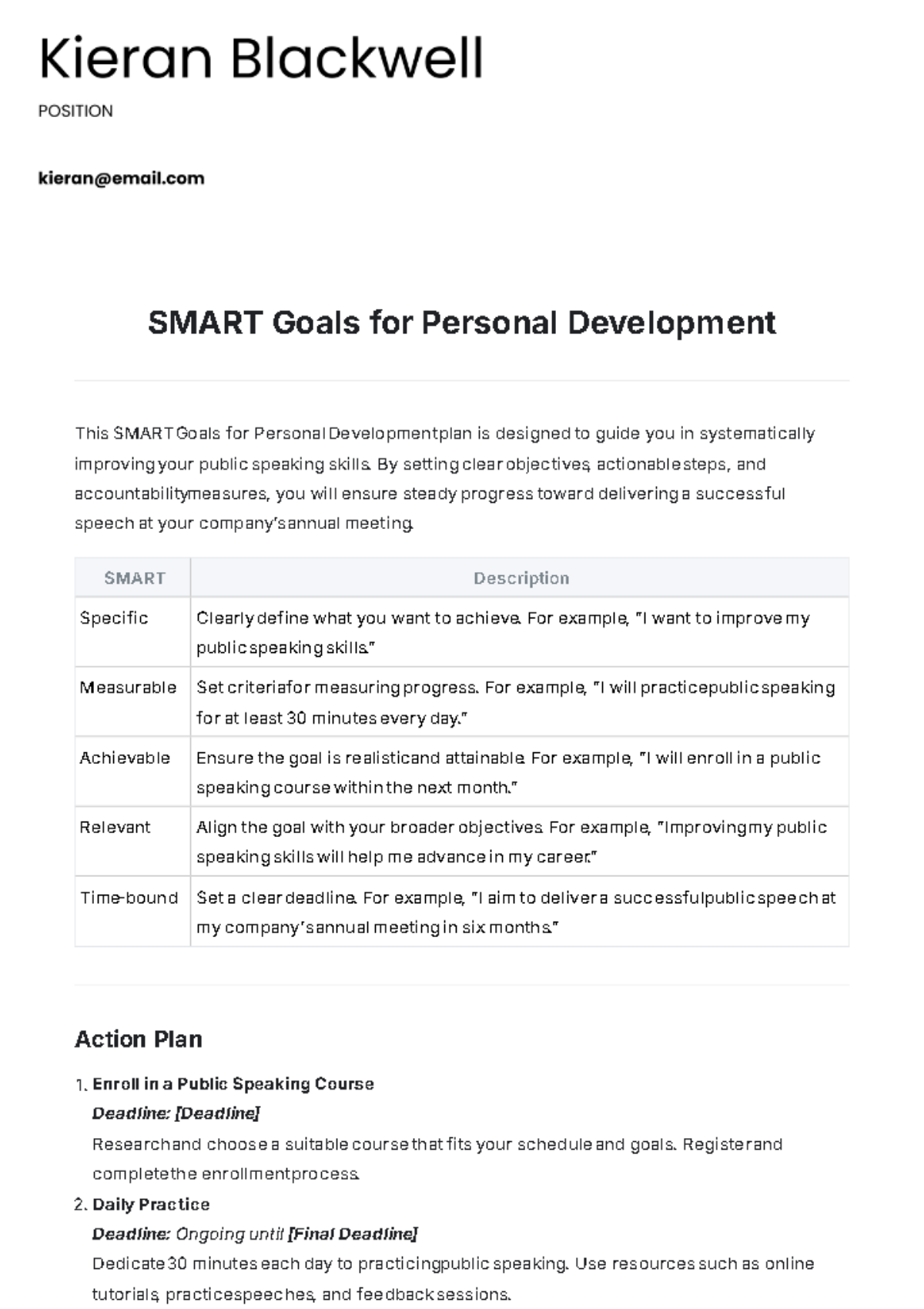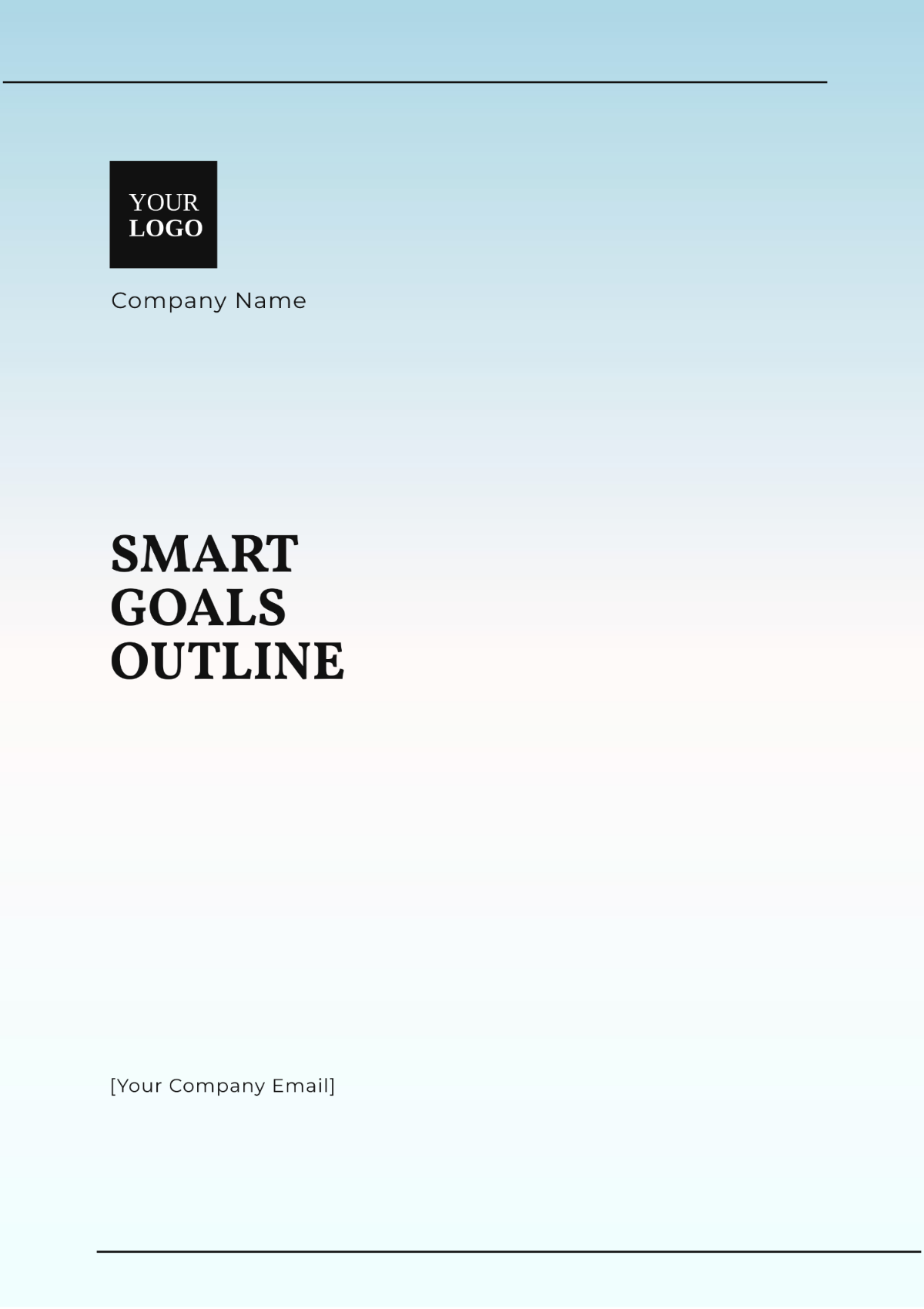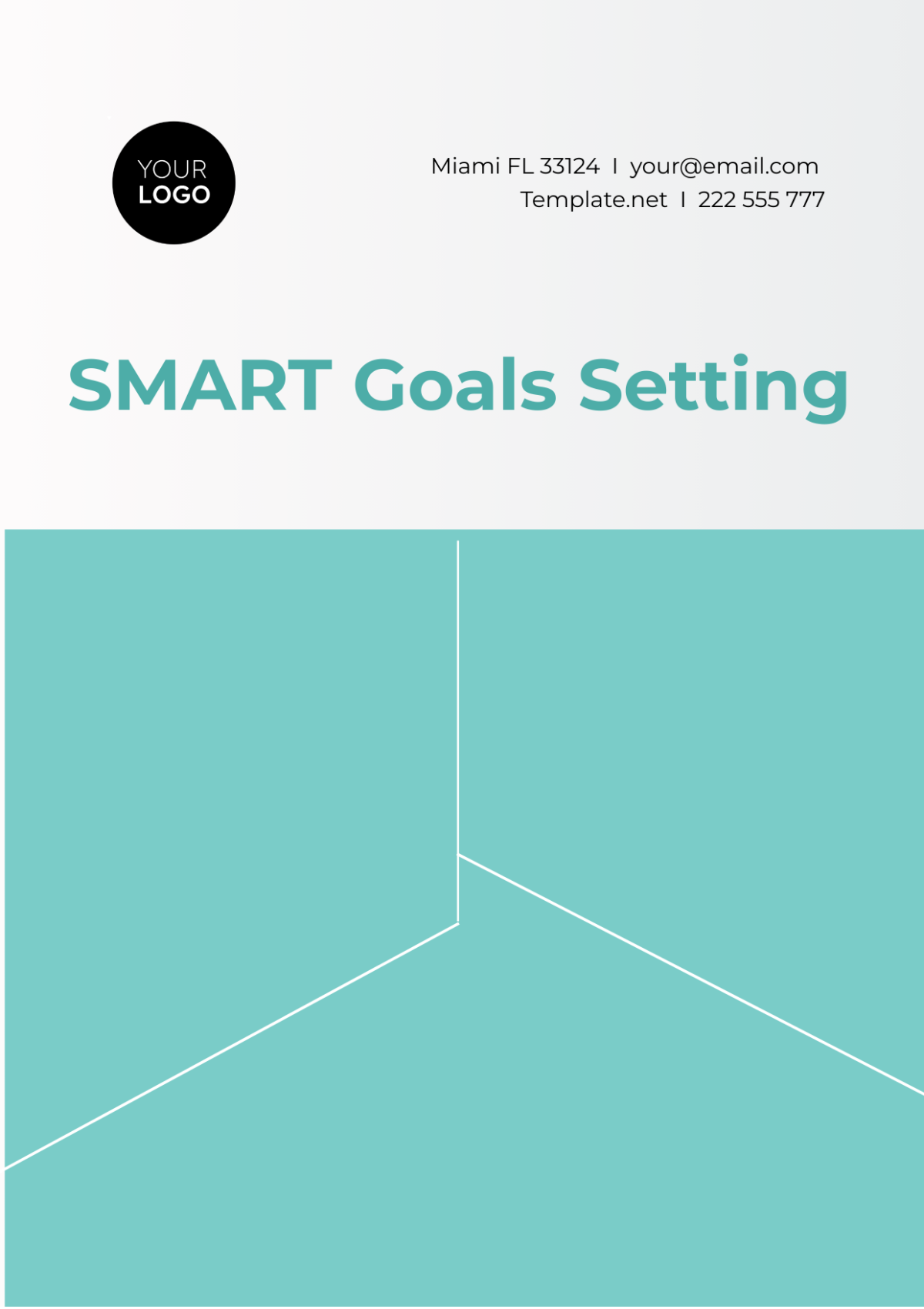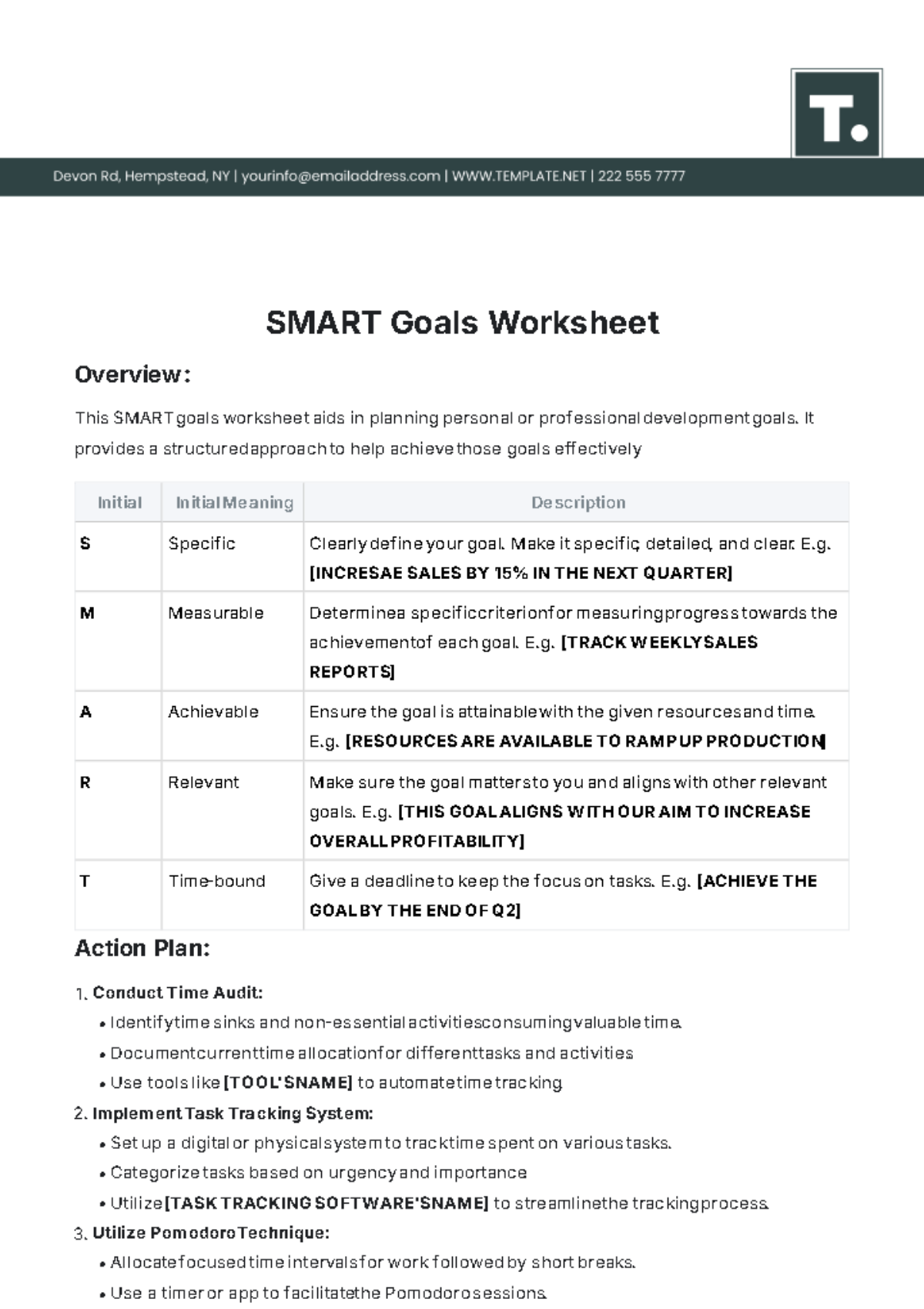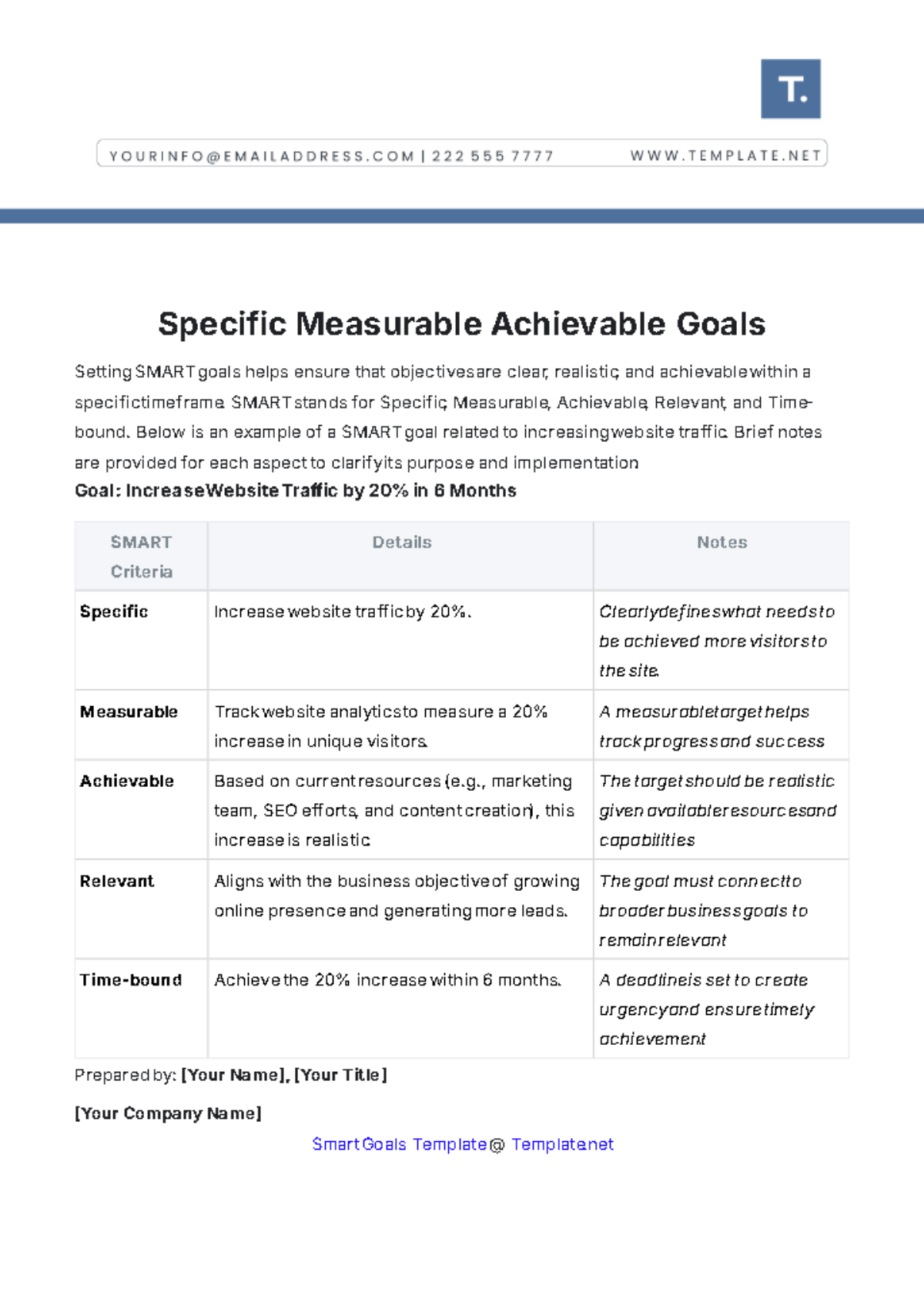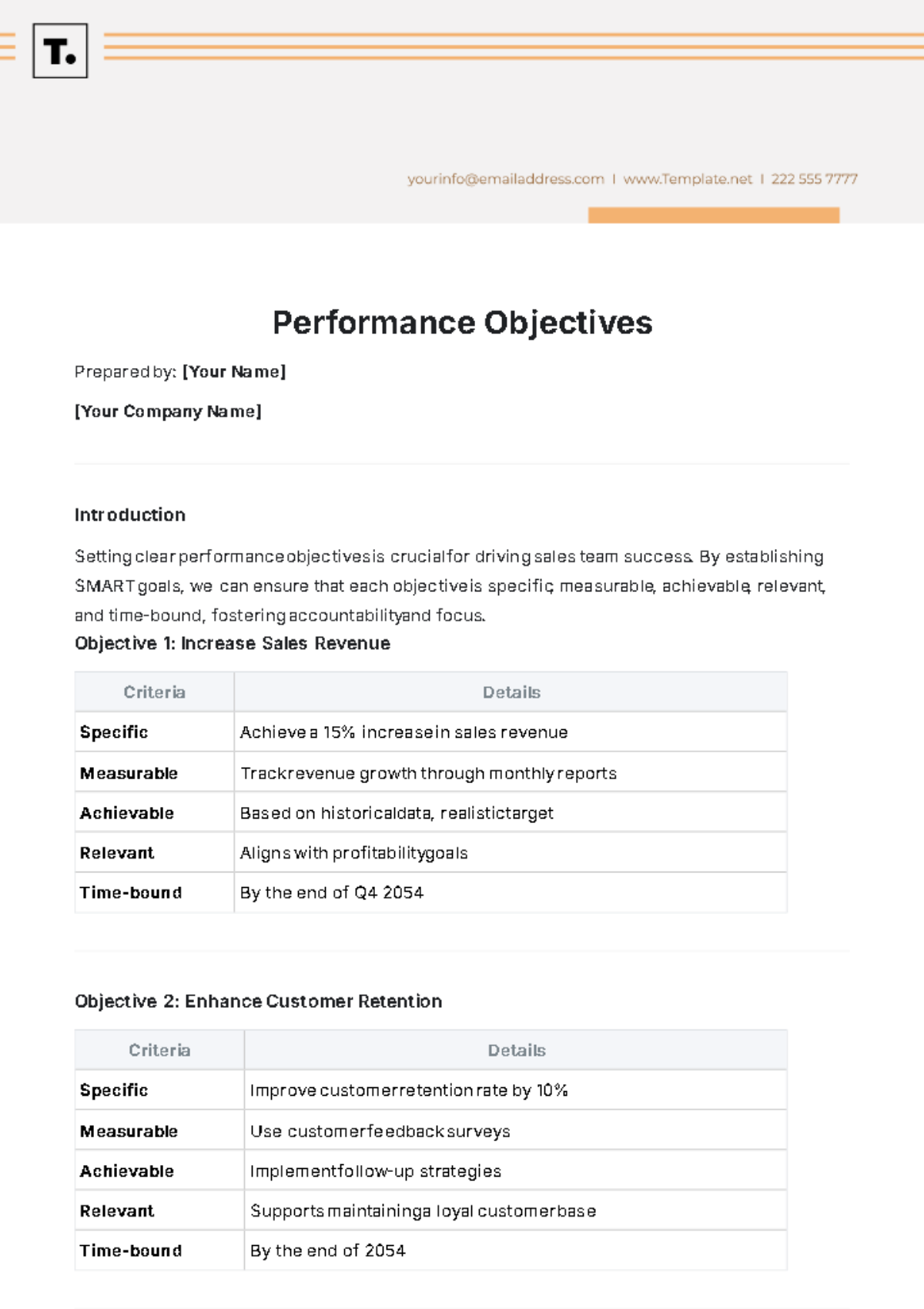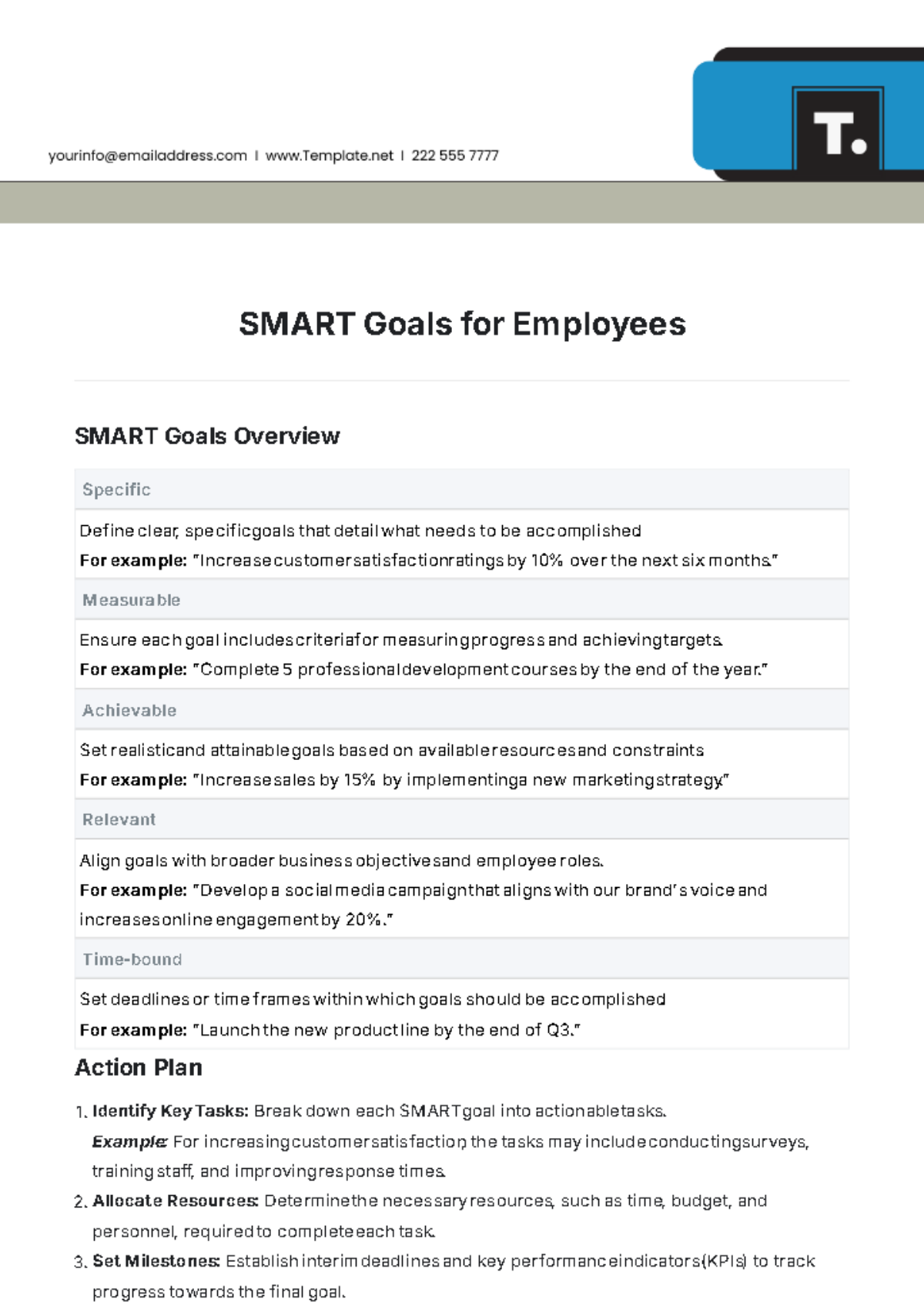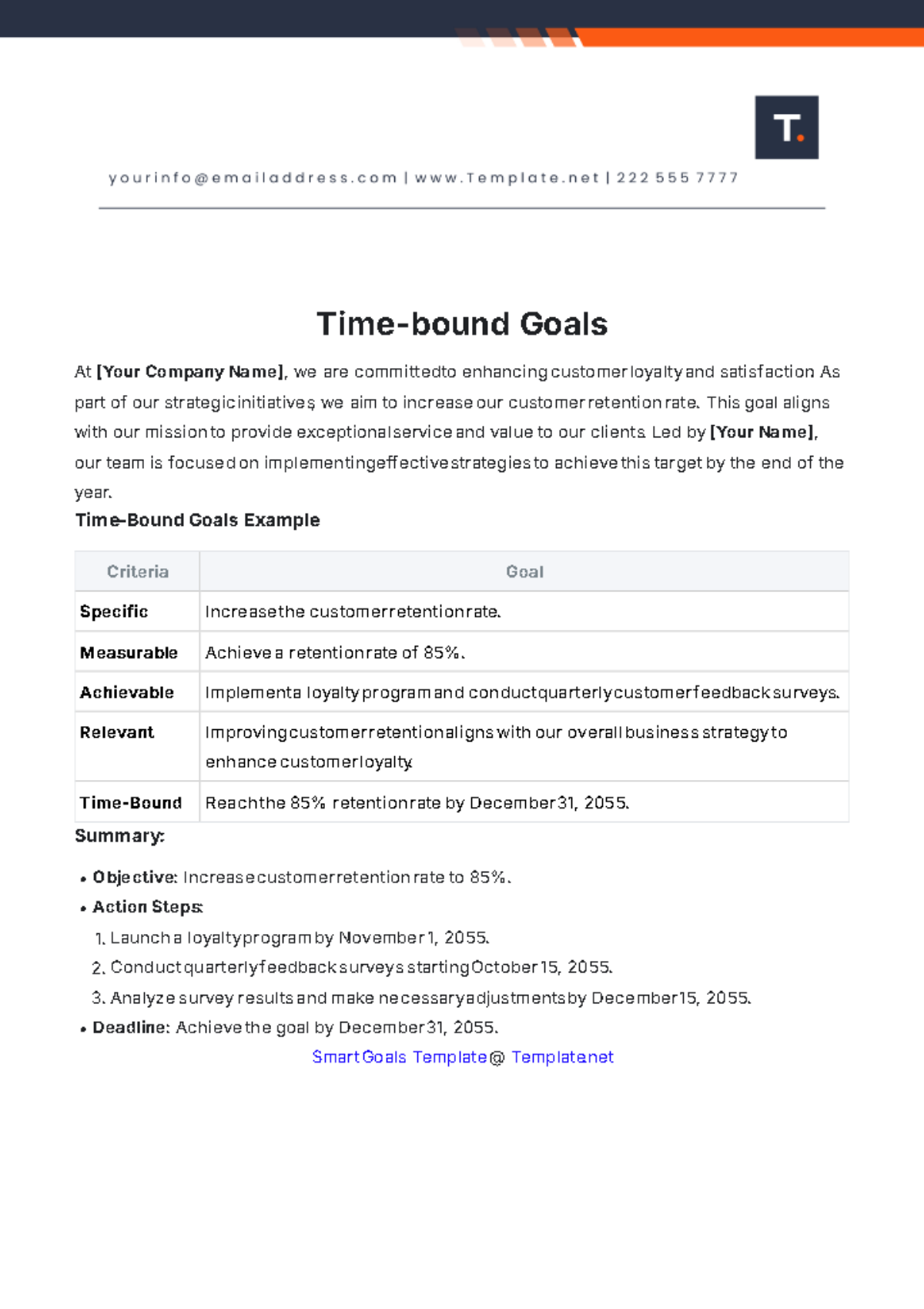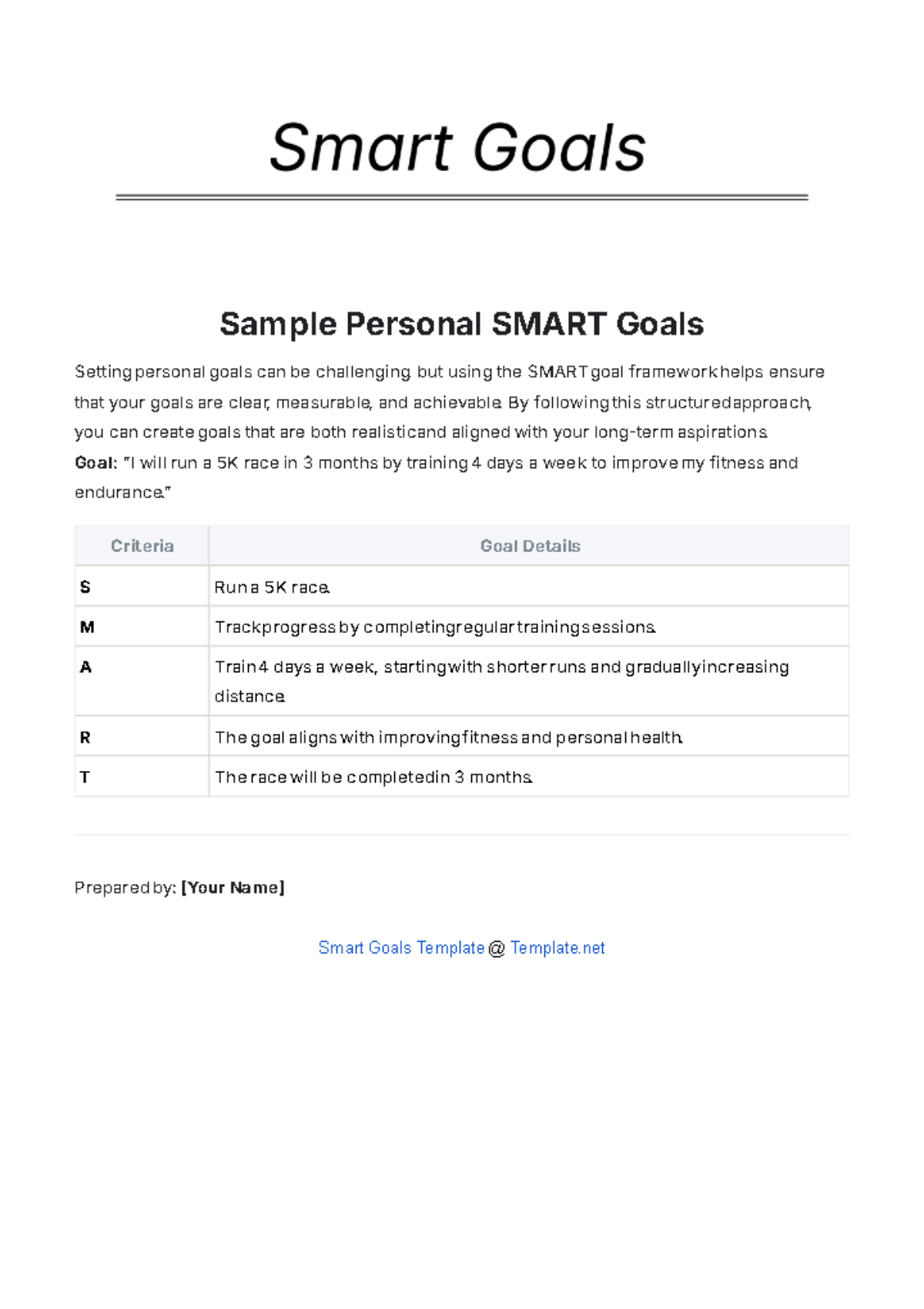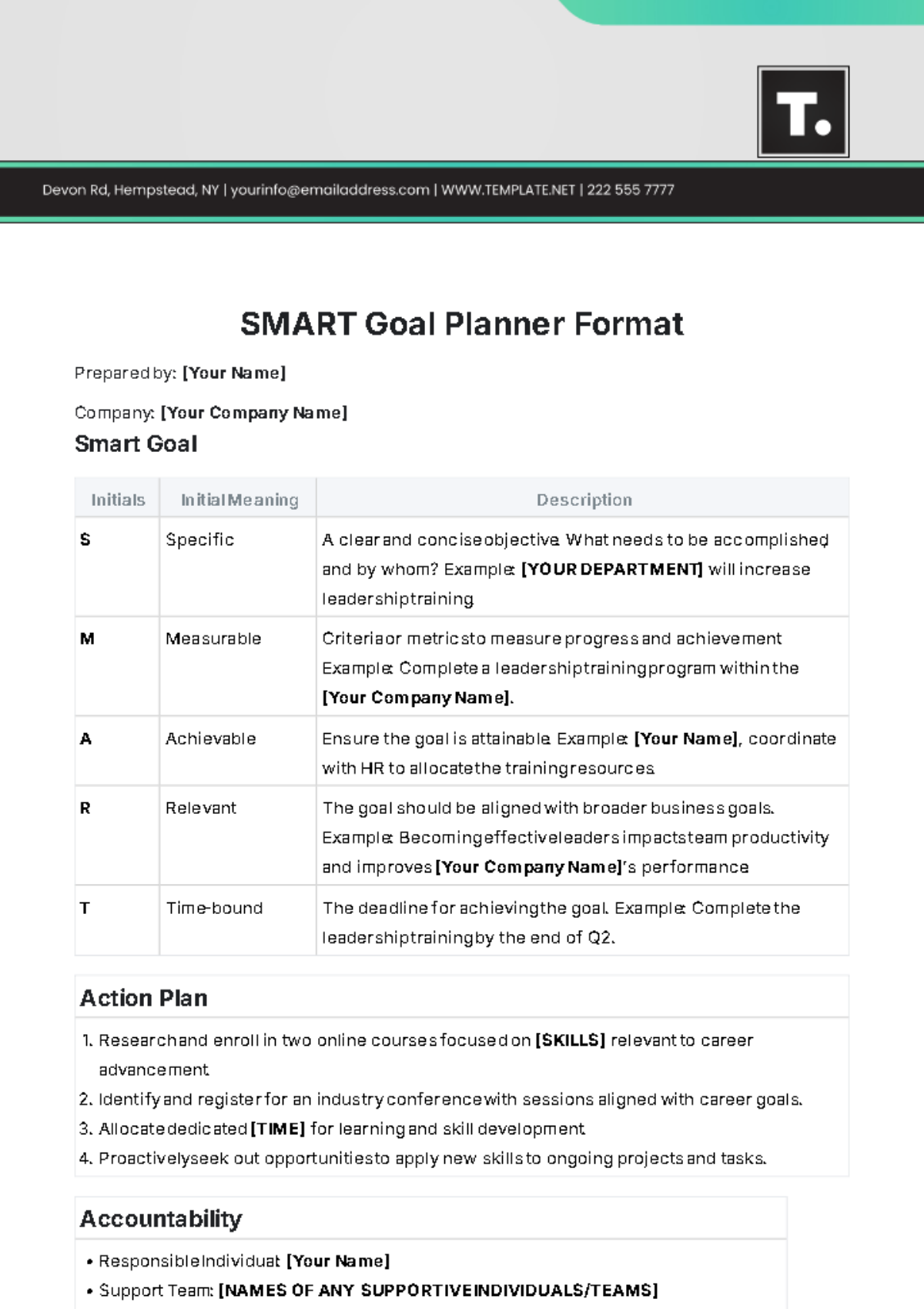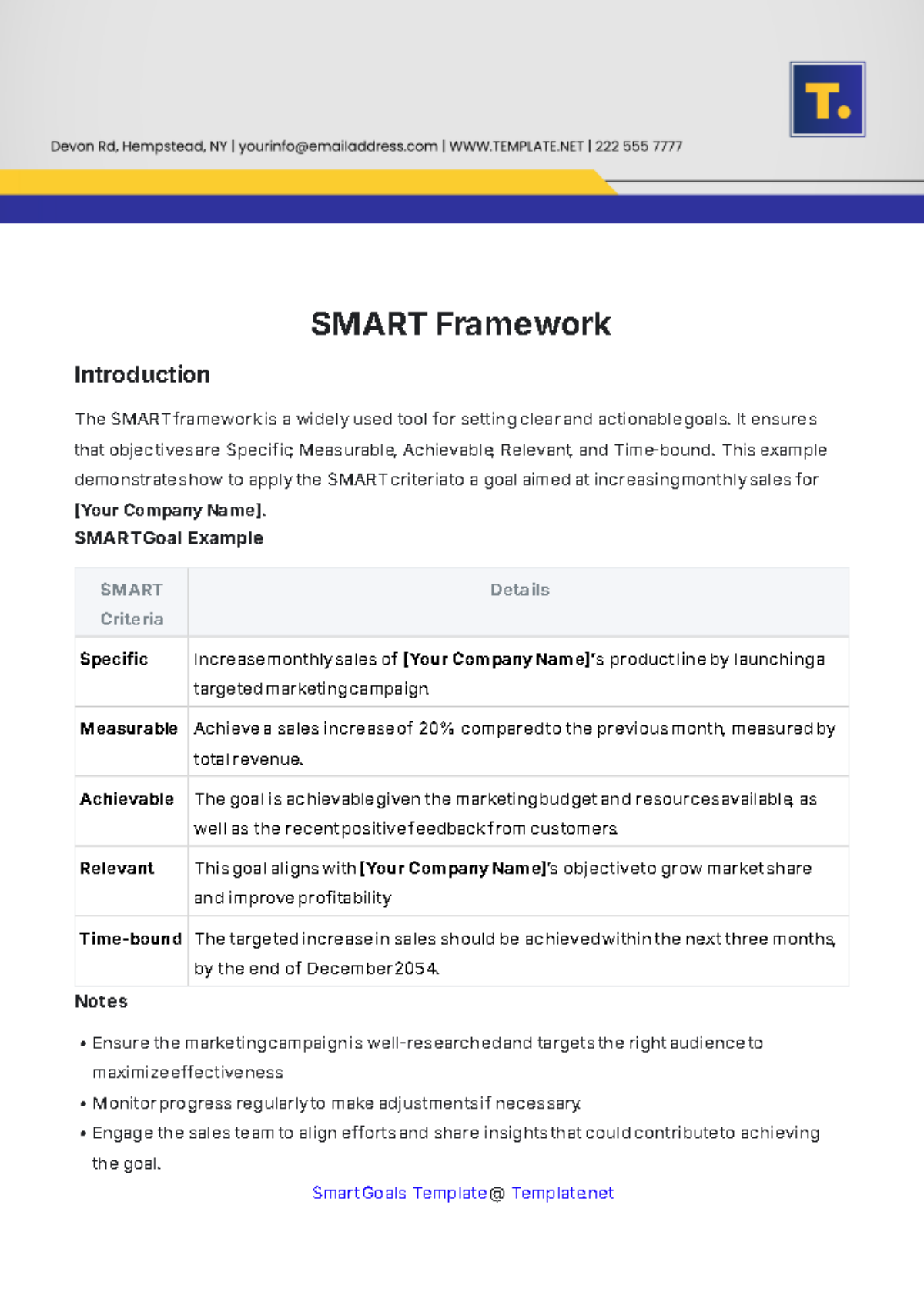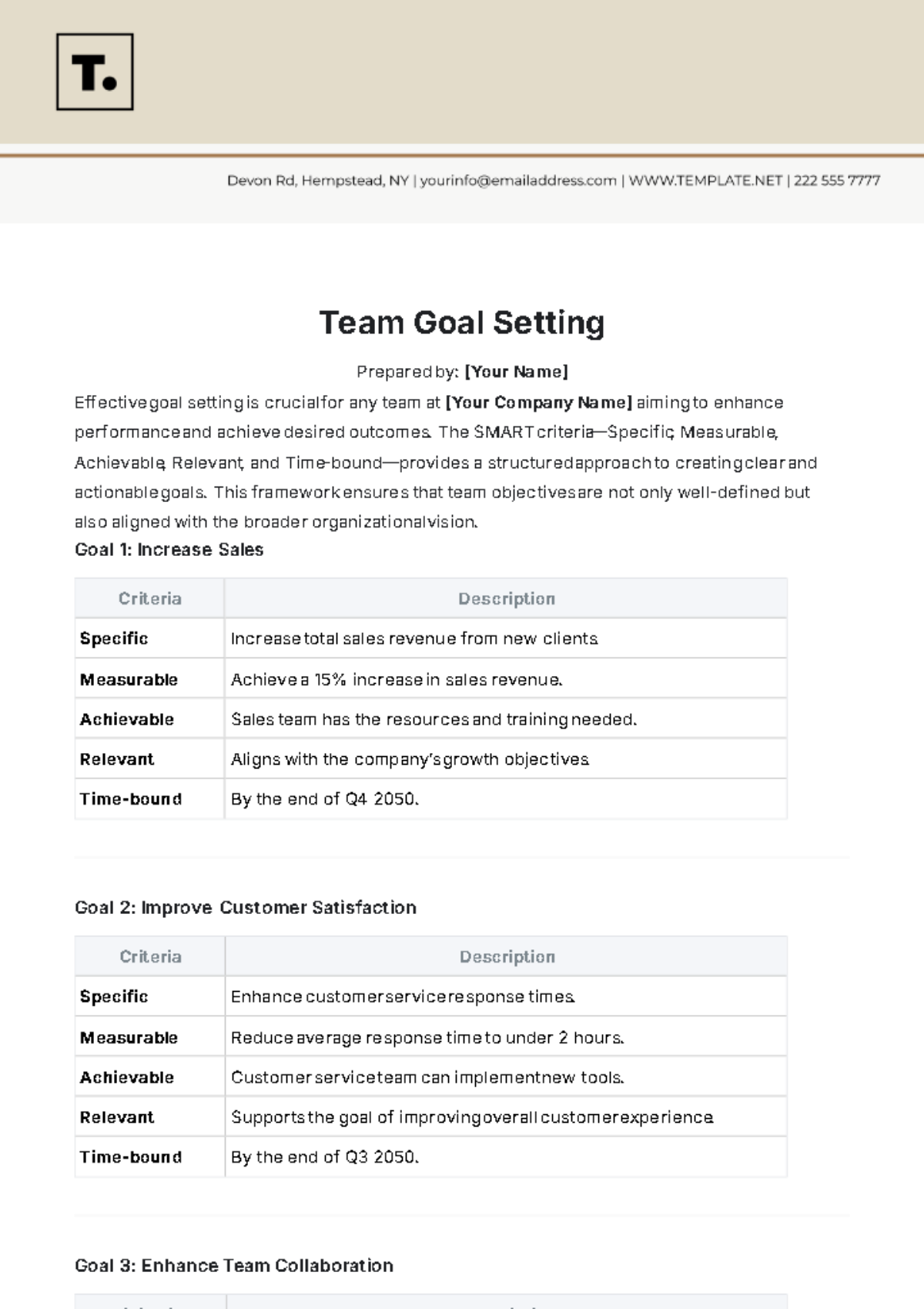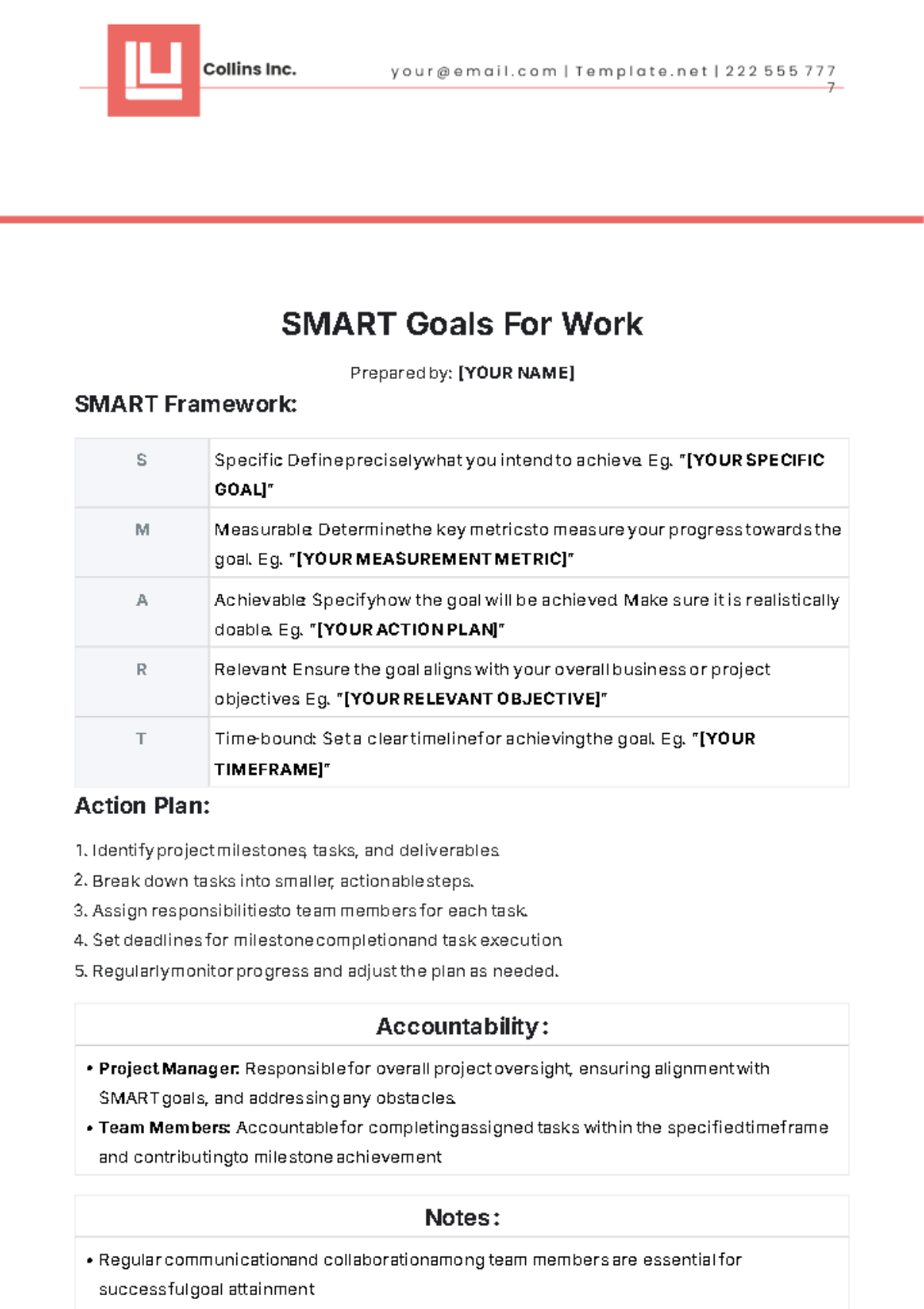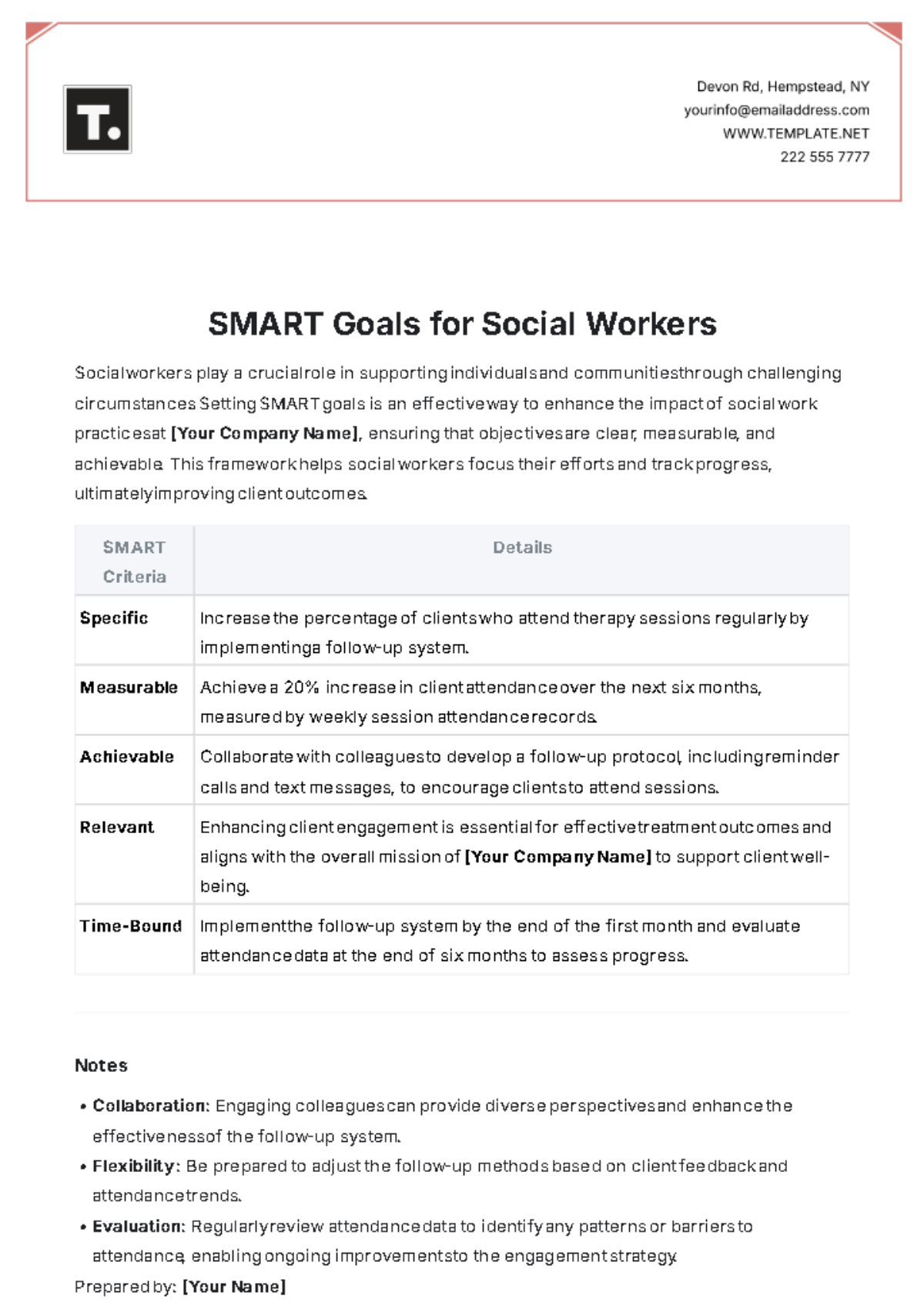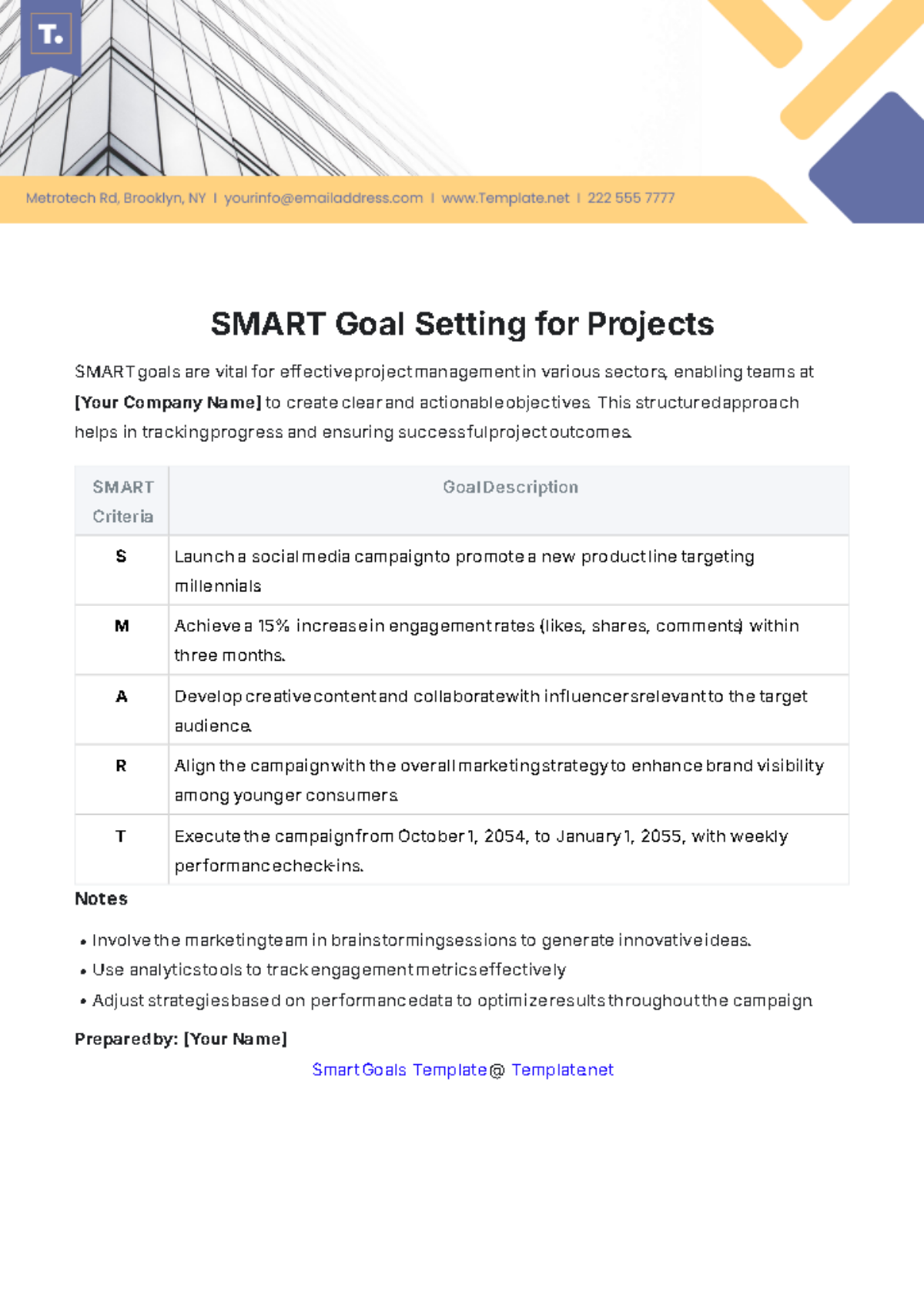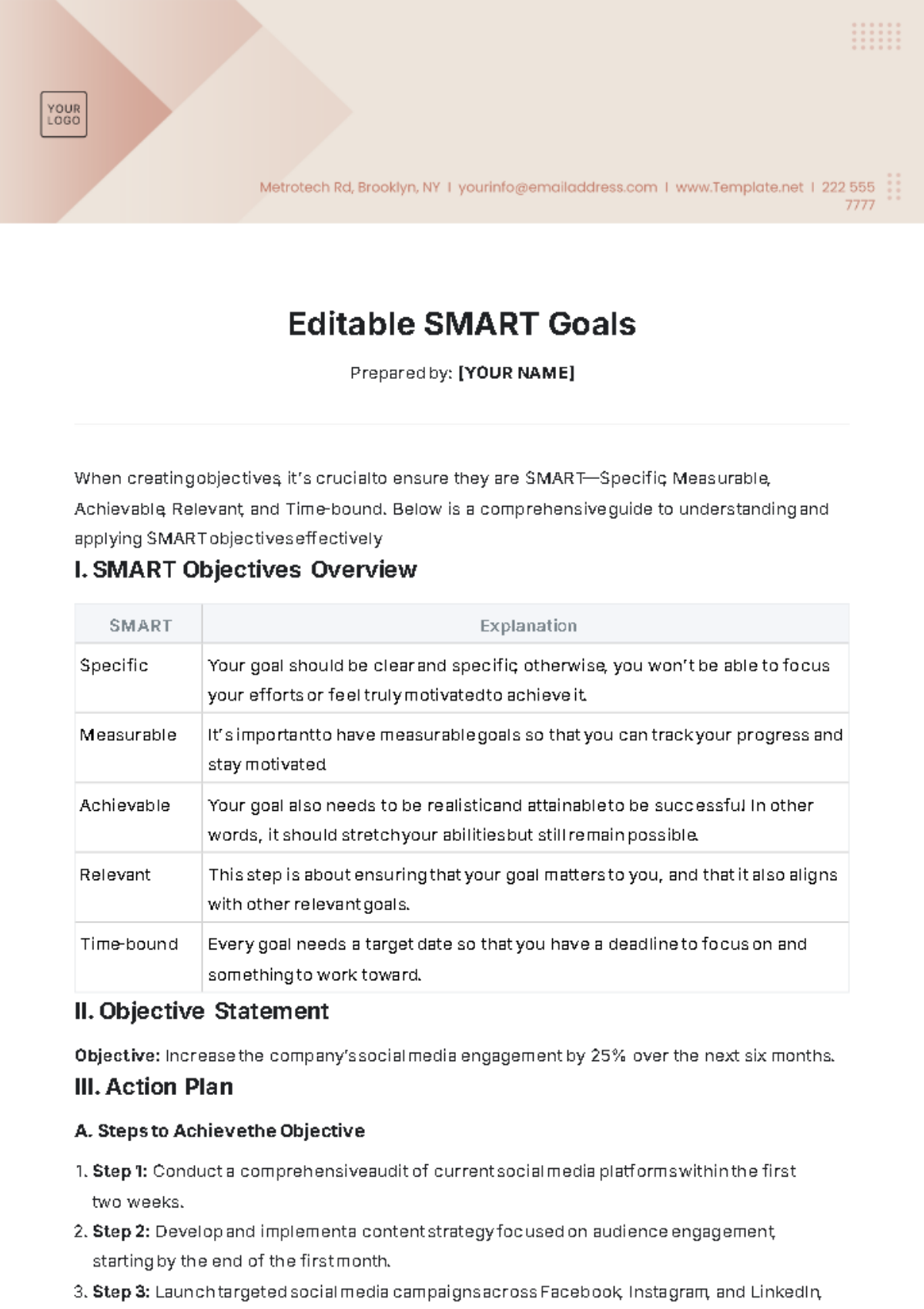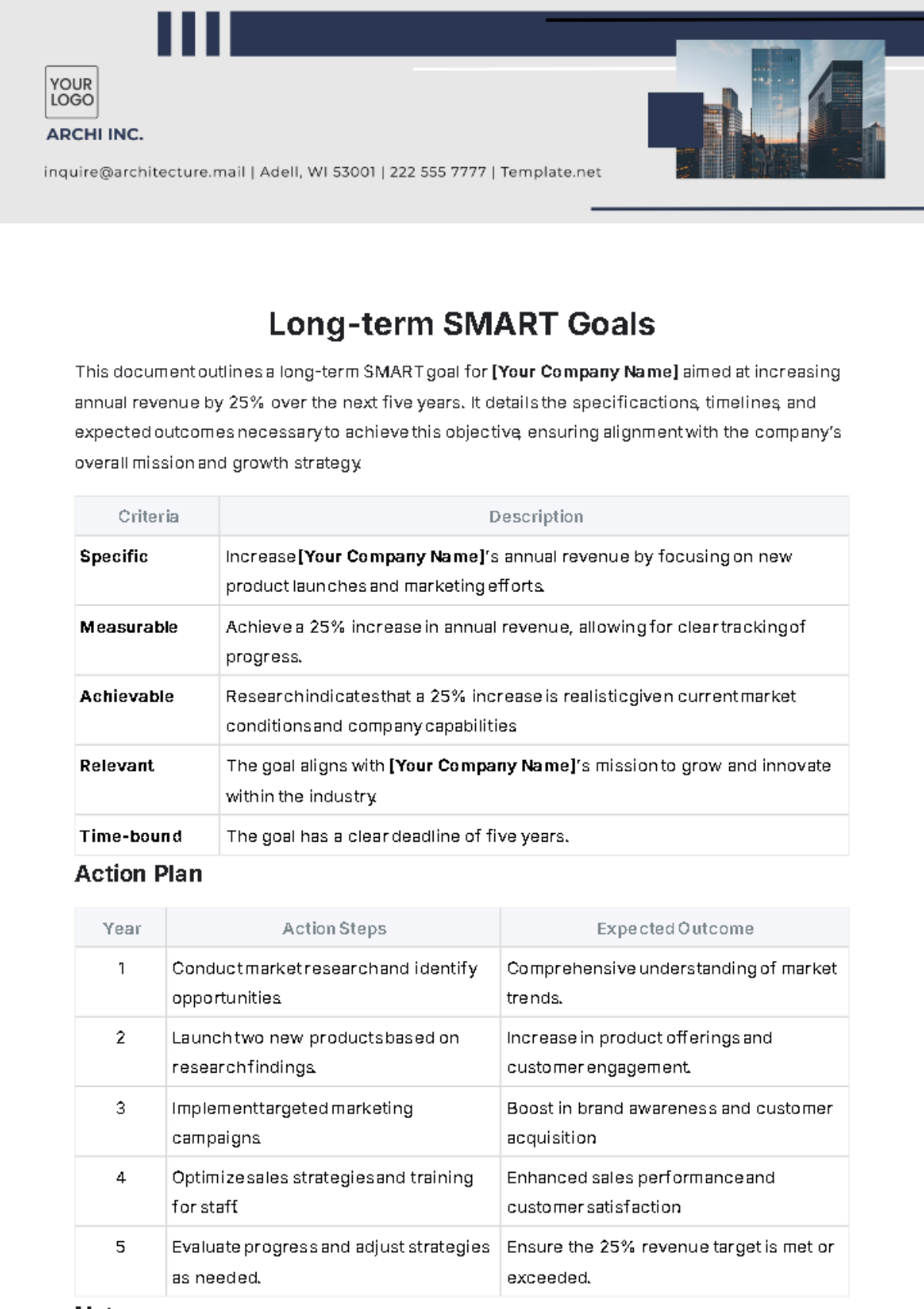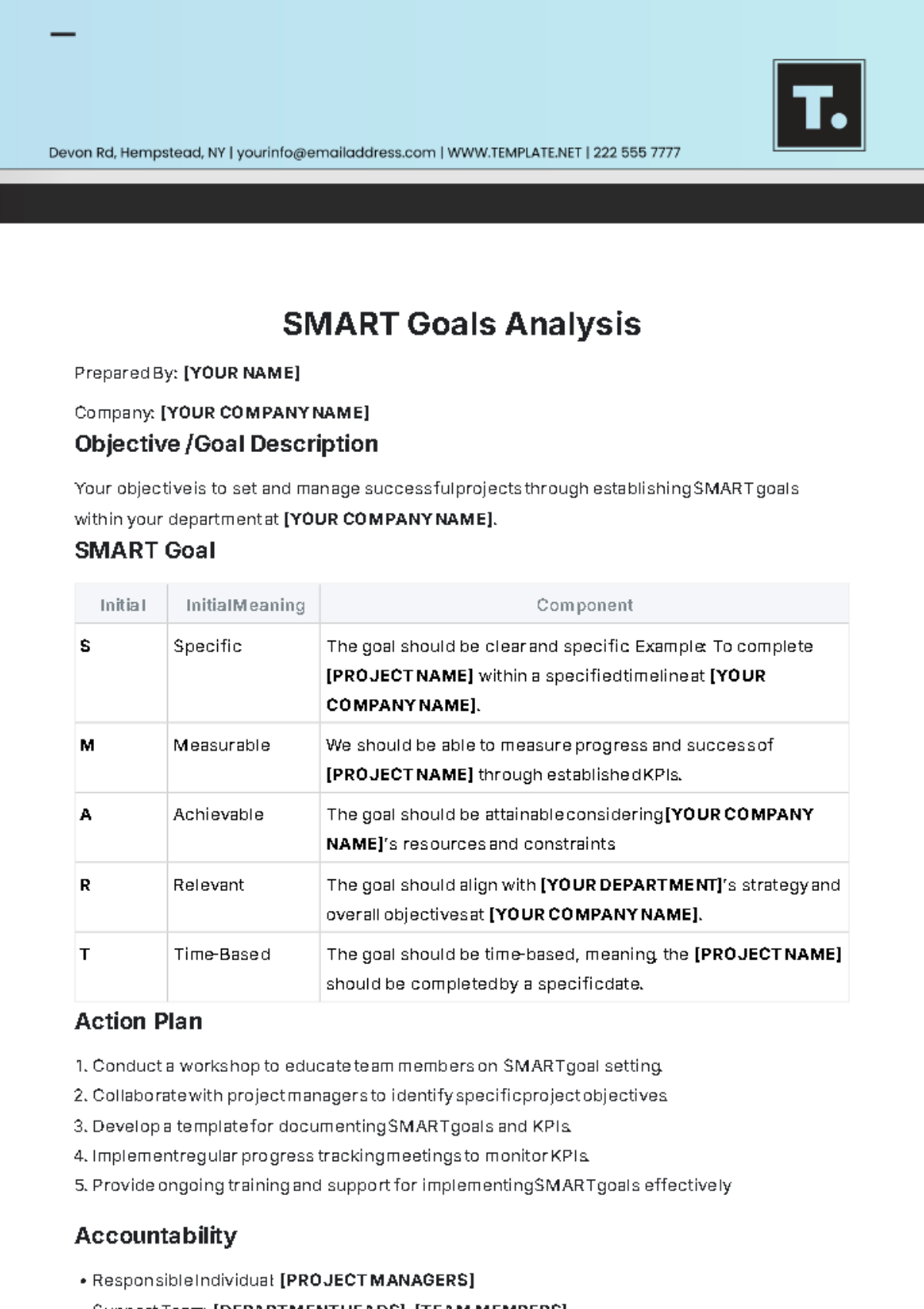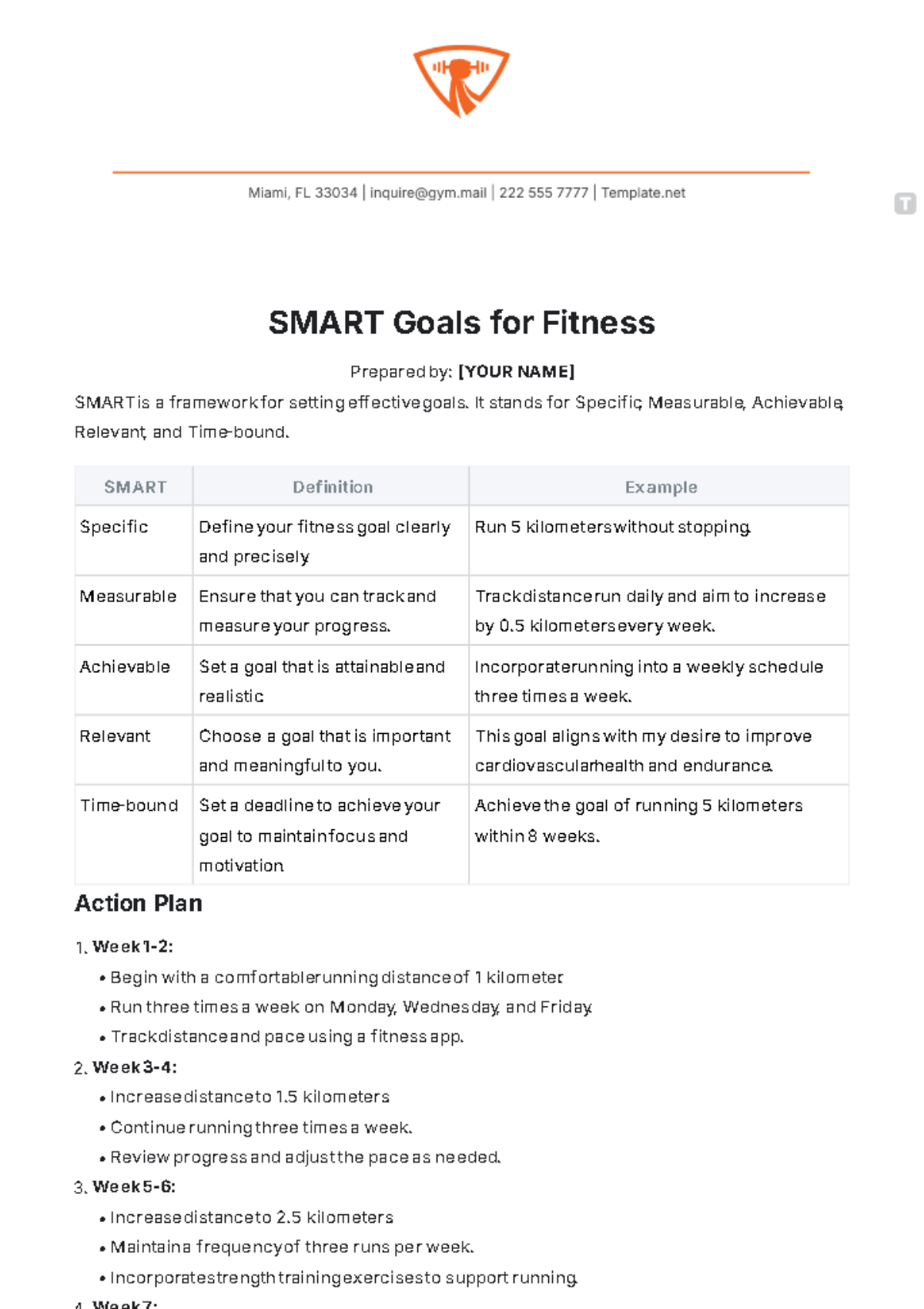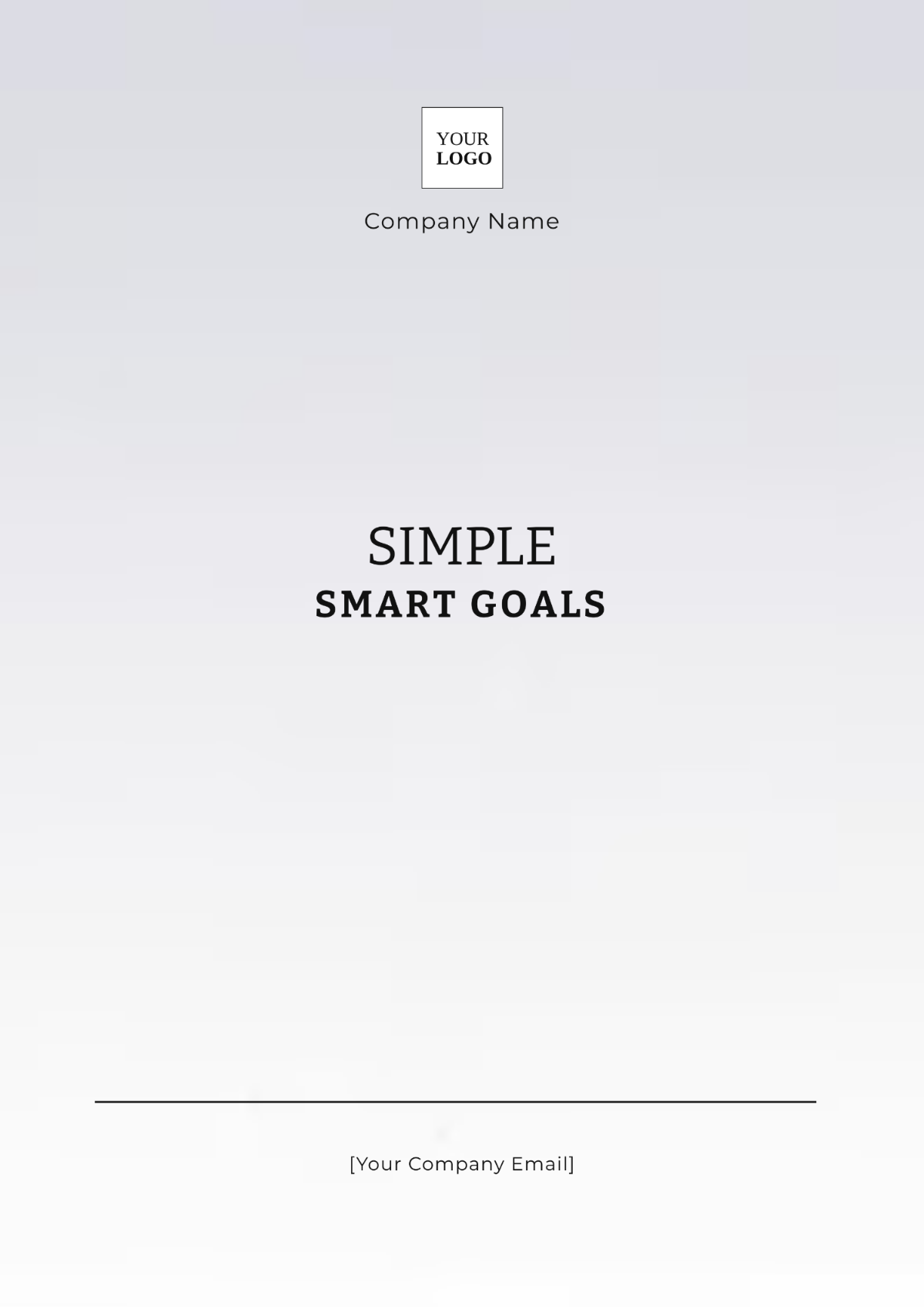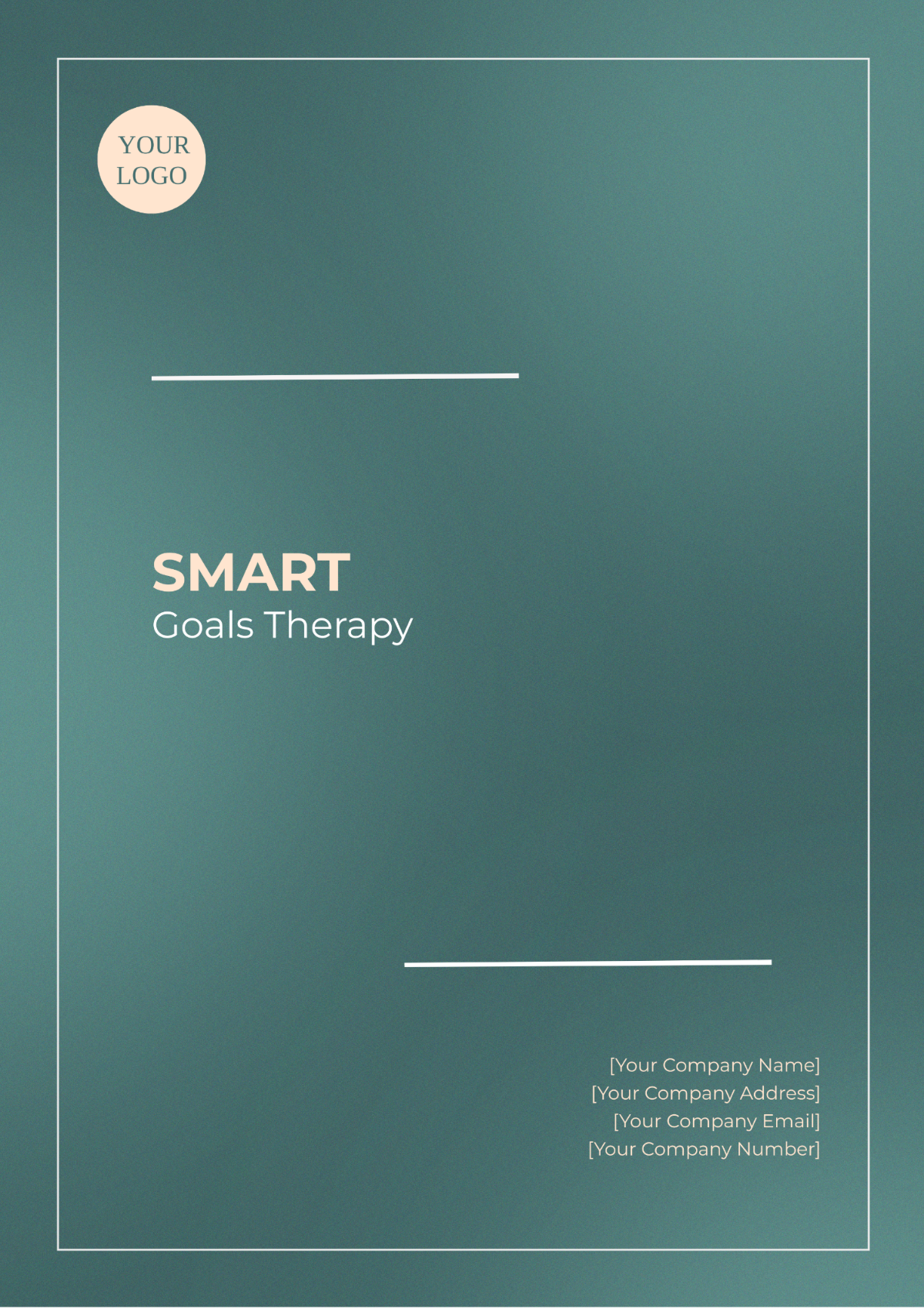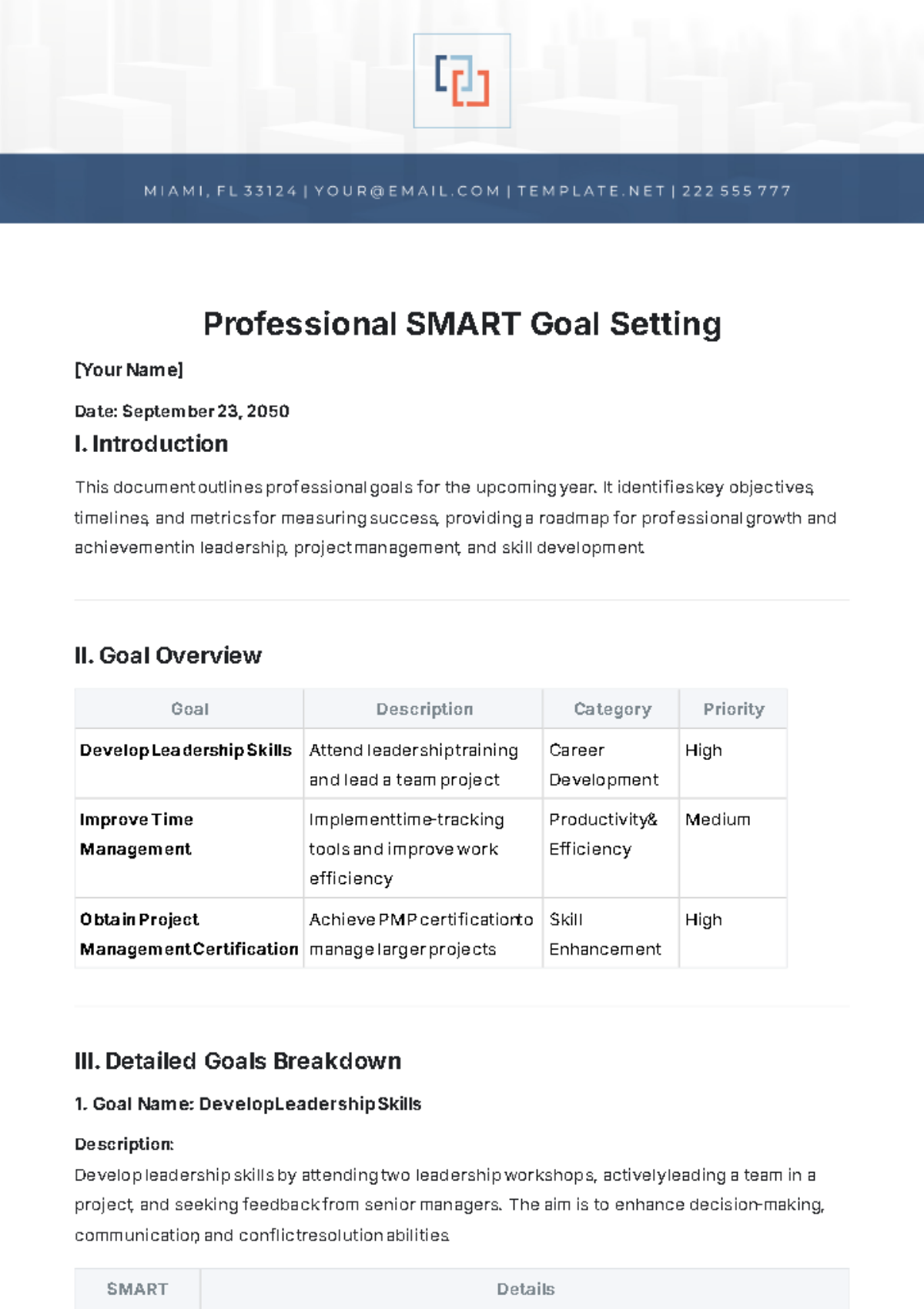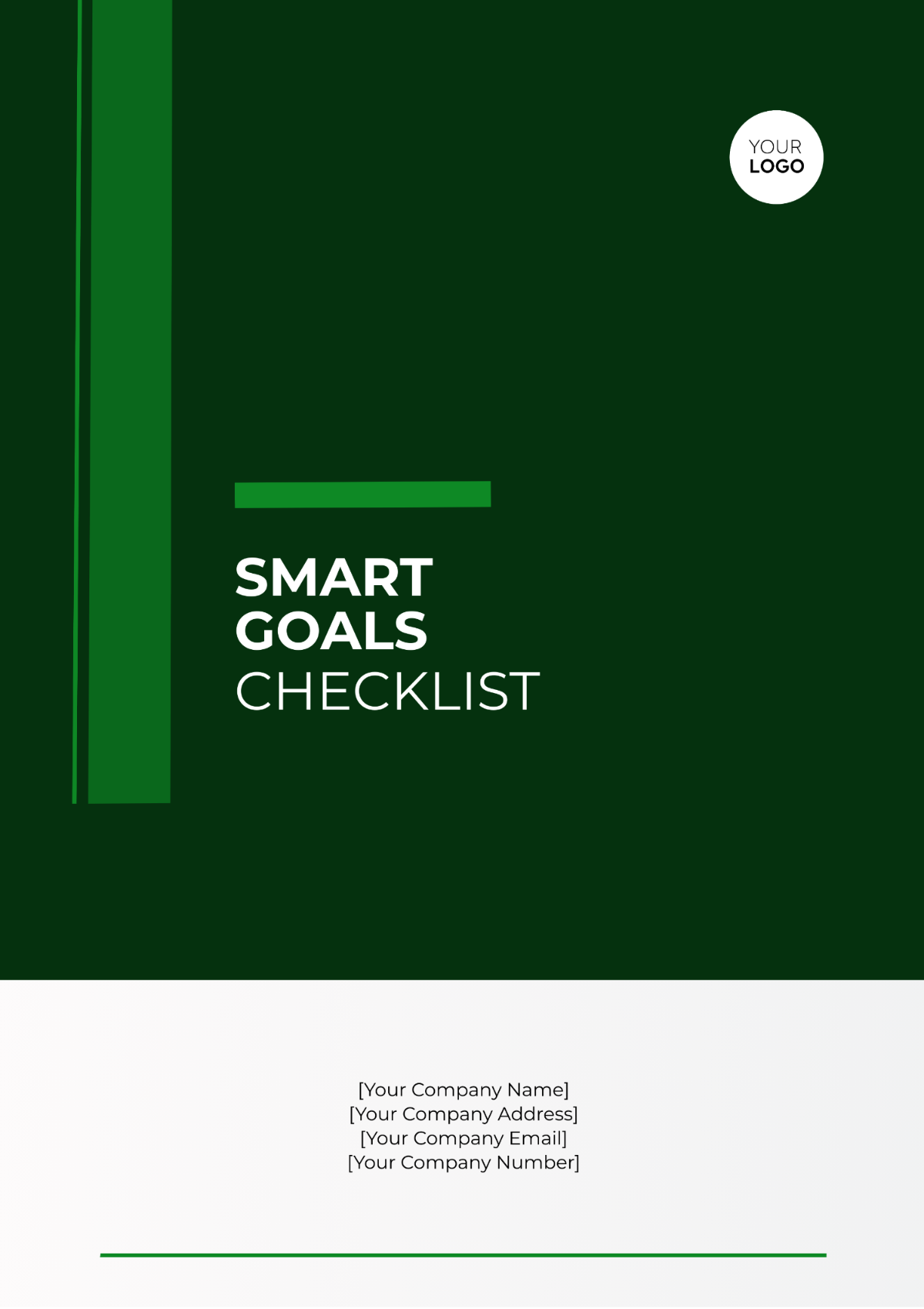SMART Goals Layout
Prepared by: [YOUR NAME]
Objective: Increase customer satisfaction scores for the company’s online support system by 20% over the next six months. This goal targets improving response times and the quality of customer interactions.
SMART | Description |
|---|---|
Specific | Clearly define the goal with precise, detailed objectives. Answer the Who, What, Where, When, and Why. Example: Improve customer satisfaction scores for online support by 20%. Focus on reducing average response times to under 2 hours and enhancing the quality of support interactions based on customer feedback. |
Measurable | Ensure the goal has measurable criteria to track progress and assess completion. Include how you will measure progress and signify successful attainment. Example: Customer satisfaction scores will be tracked through monthly surveys. Success will be indicated by a 20% increase in the average satisfaction score compared to the baseline measurement. |
Achievable | Set a realistic goal that is attainable and within the scope of your abilities and constraints. Consider the steps and resources needed to achieve it. Example: The goal is achievable with the implementation of a new training program for support staff and the introduction of a more efficient ticketing system. Resources required include training materials and system upgrades. |
Relevant | Align the goal with broader objectives and ensure it is meaningful. Verify that it is worthwhile and aligned with other relevant goals. Example: This goal aligns with the company’s broader objective of enhancing customer service quality and increasing overall customer retention. Improved satisfaction scores will contribute to positive brand perception. |
Time-bound | Establish a clear timeframe for achieving the goal. Define deadlines and set a schedule to create a sense of urgency and keep the focus. Example: The target is to achieve a 20% increase in customer satisfaction scores within six months. Key milestones include completing staff training within the first month and rolling out the new ticketing system by the end of the second month. |
Action Plan |
|---|
|
Accountability |
|---|
|
Notes |
|---|
|

